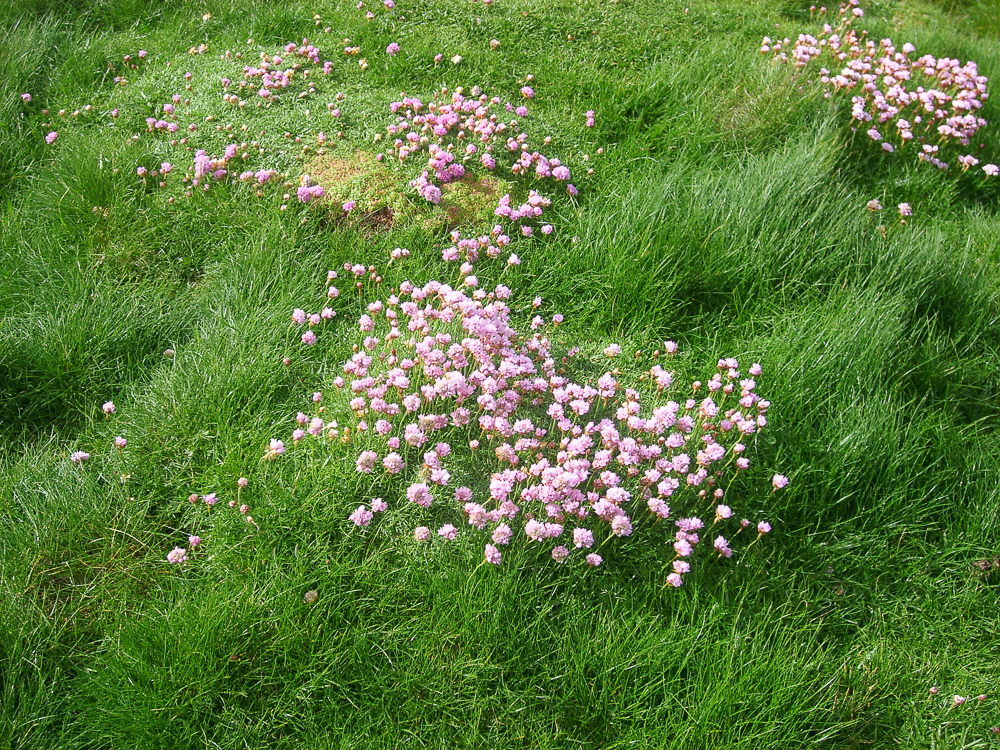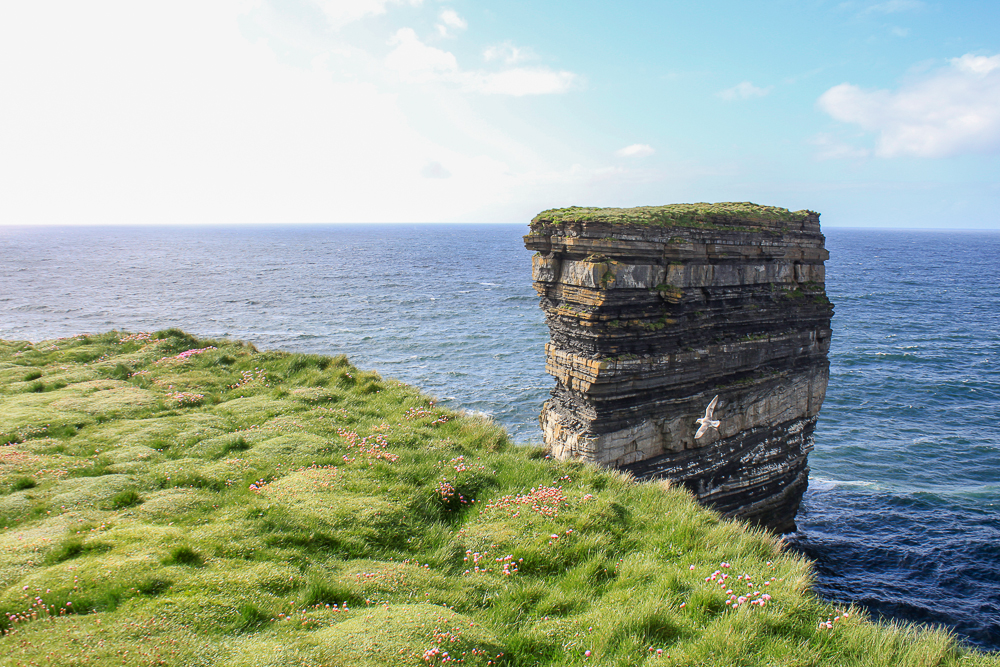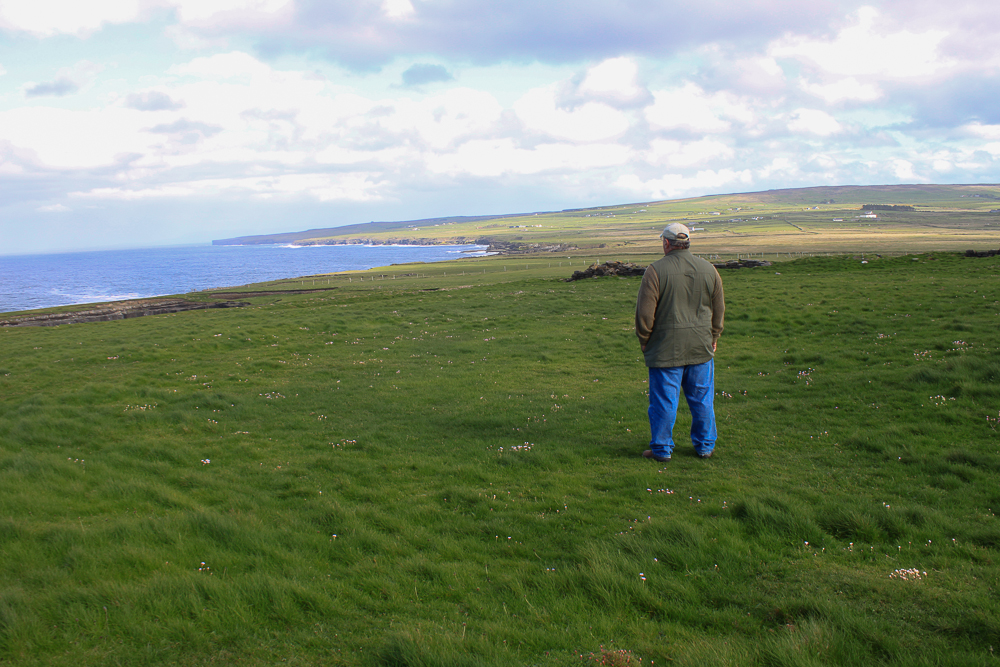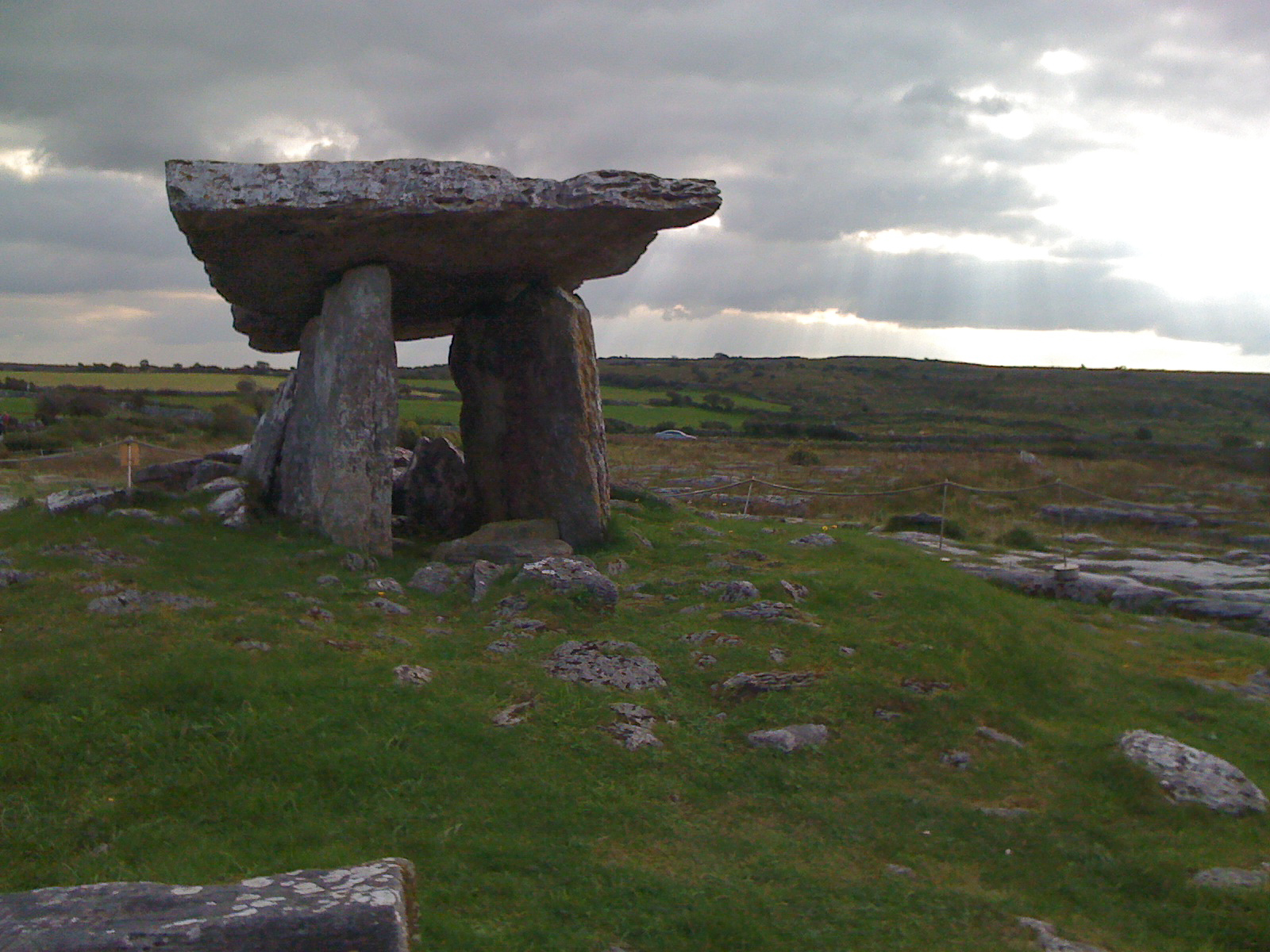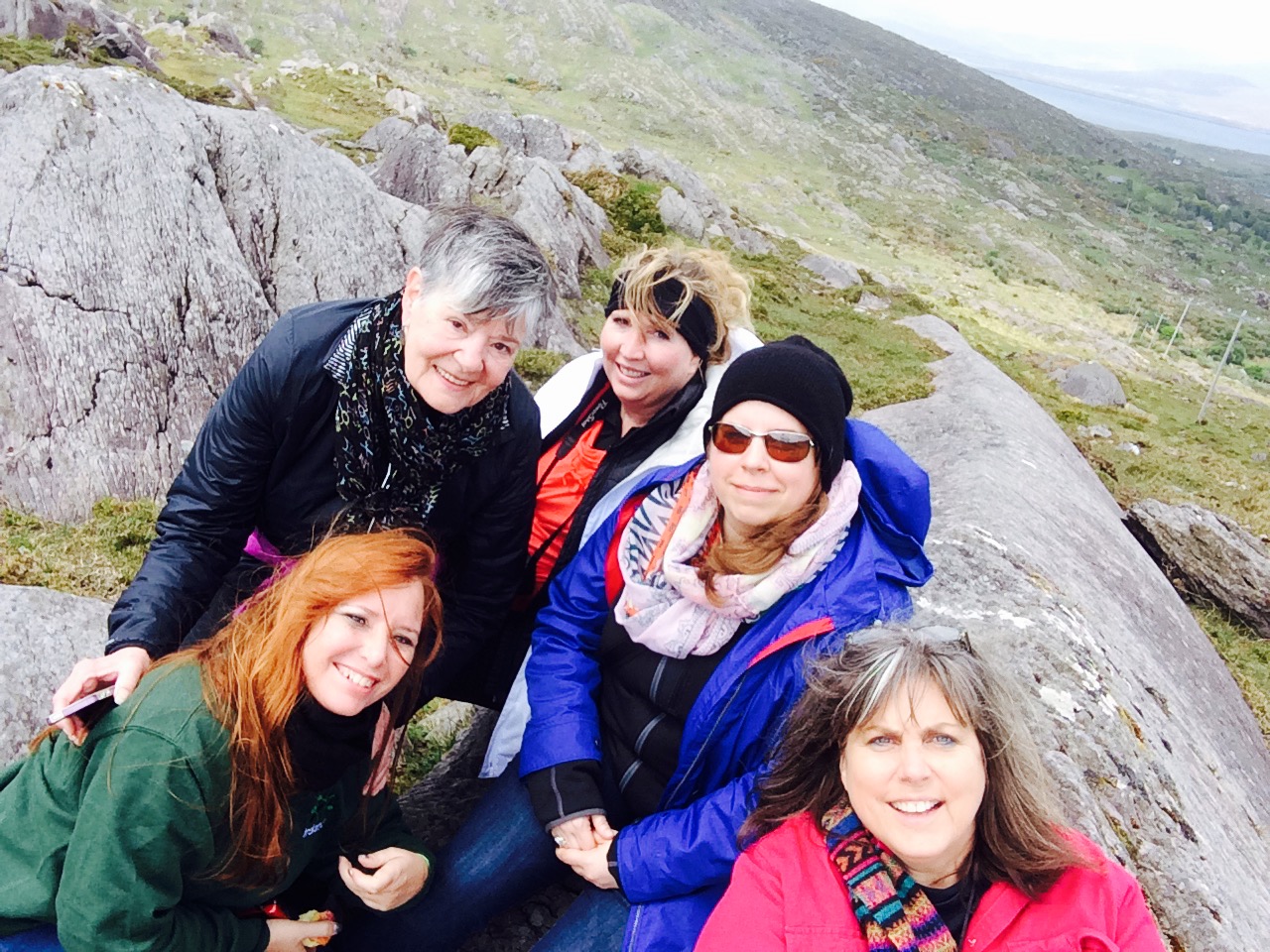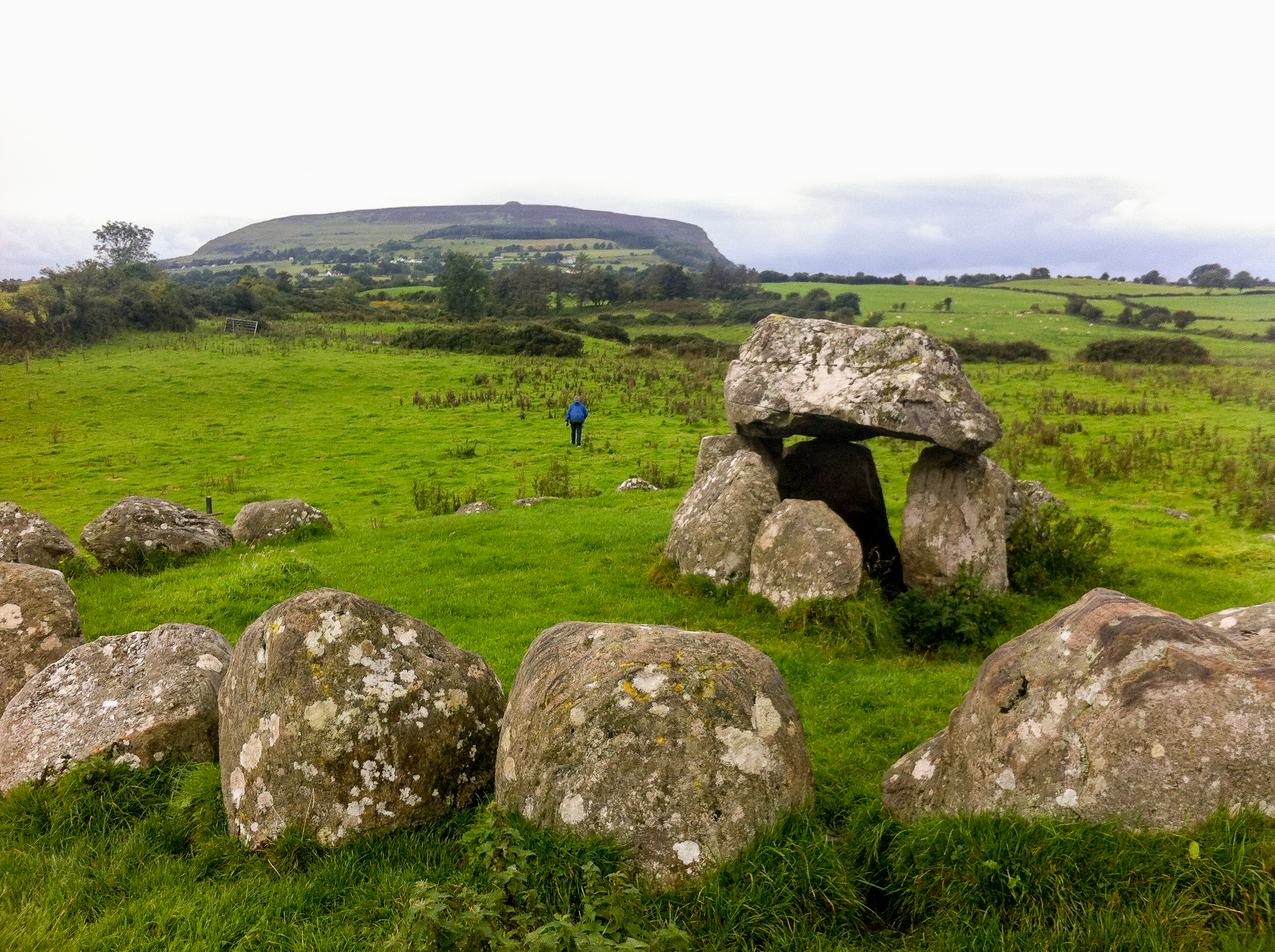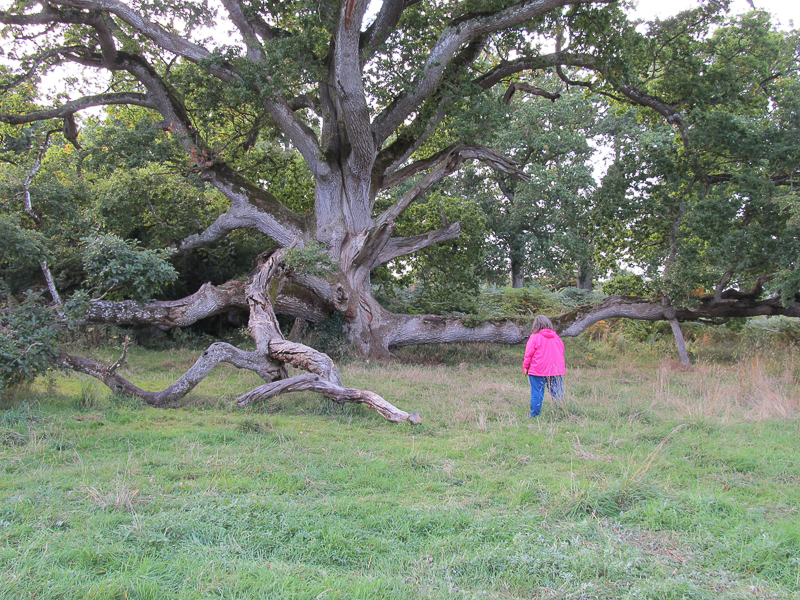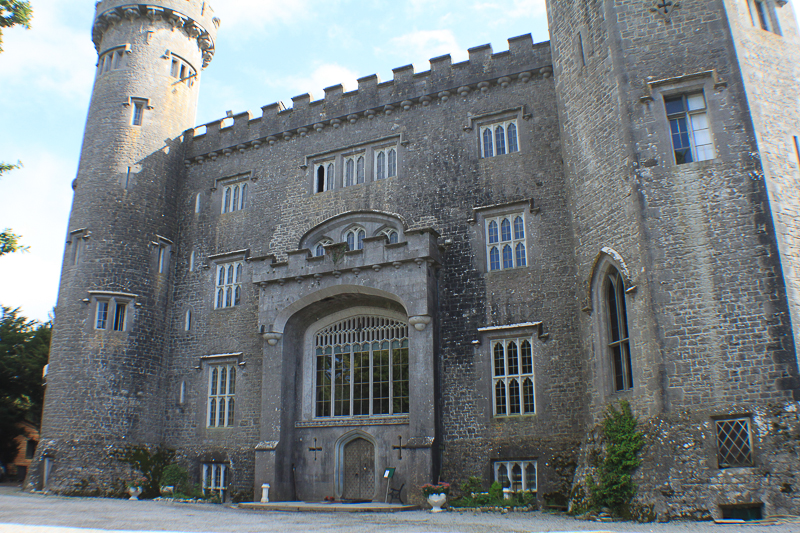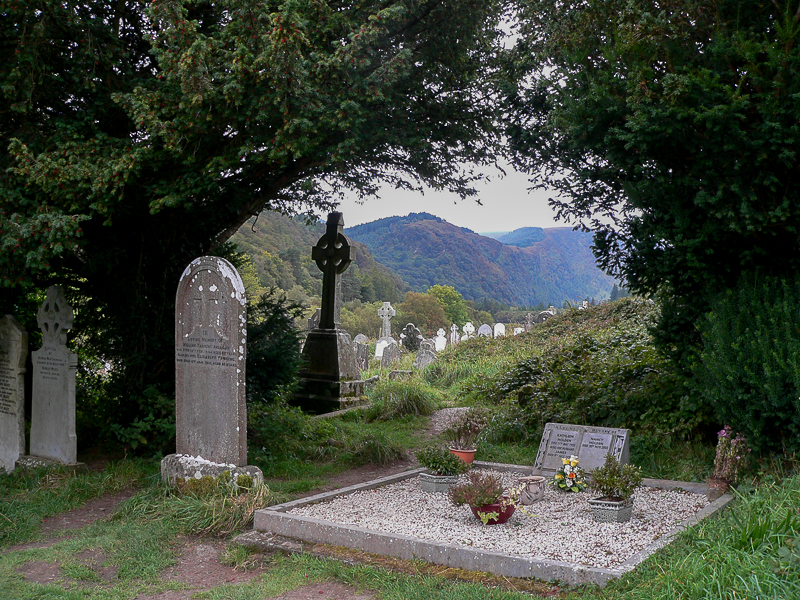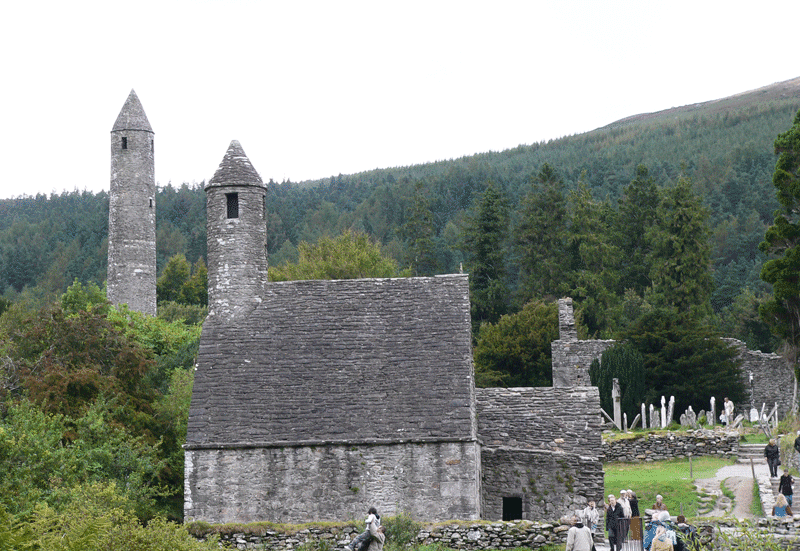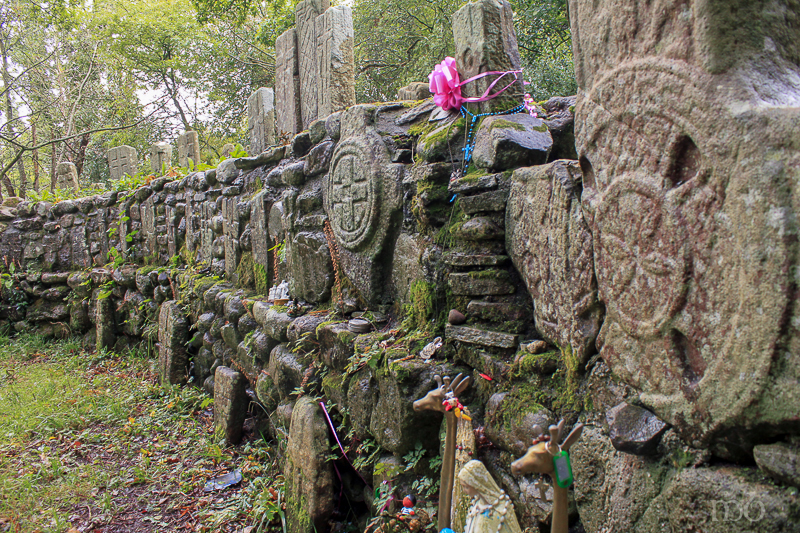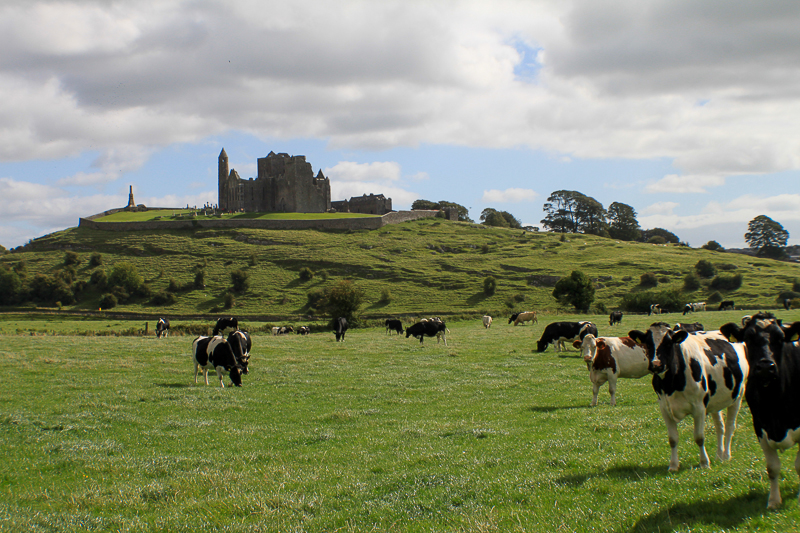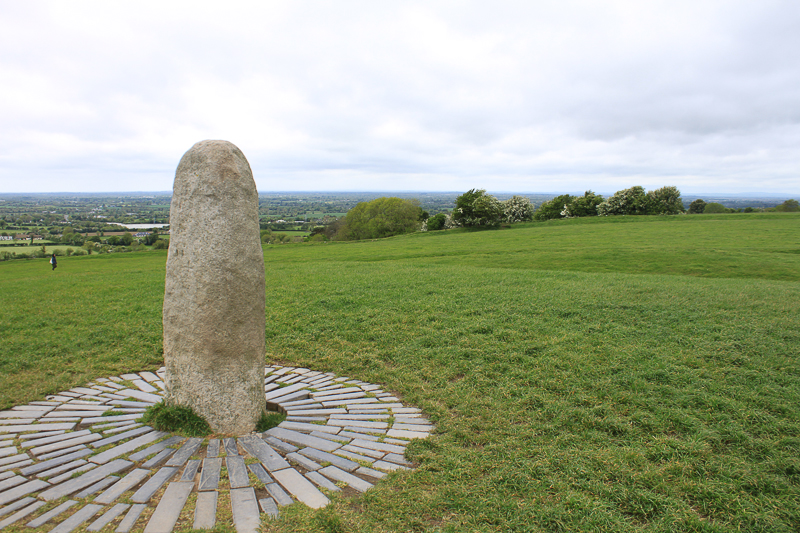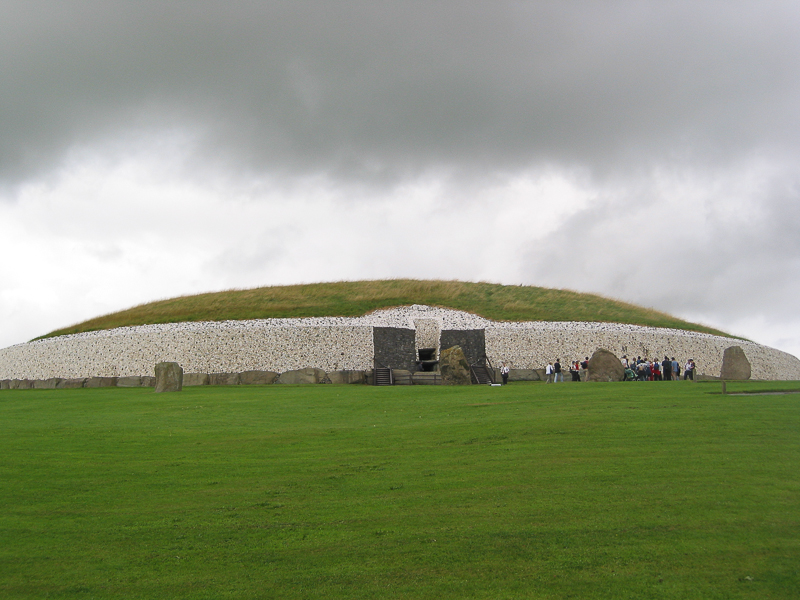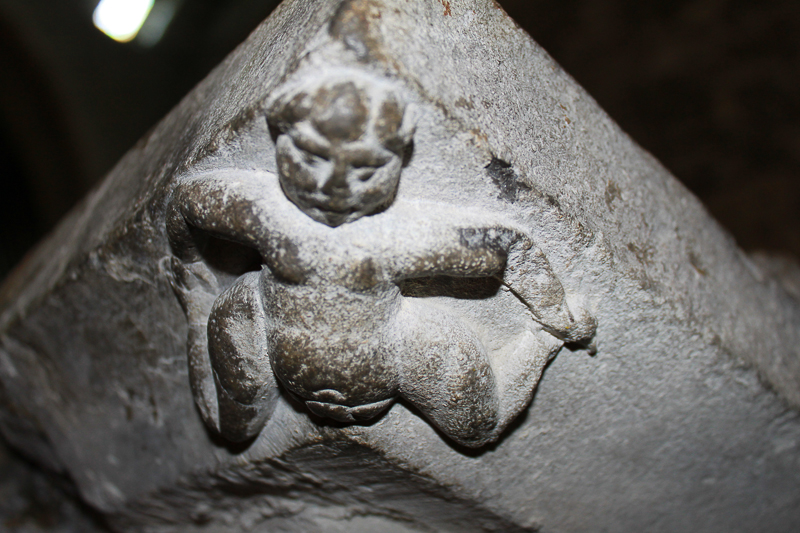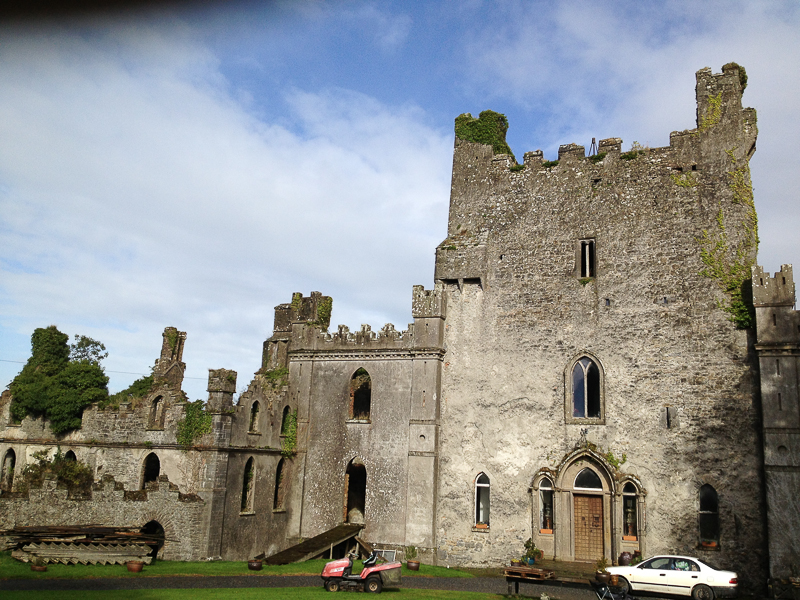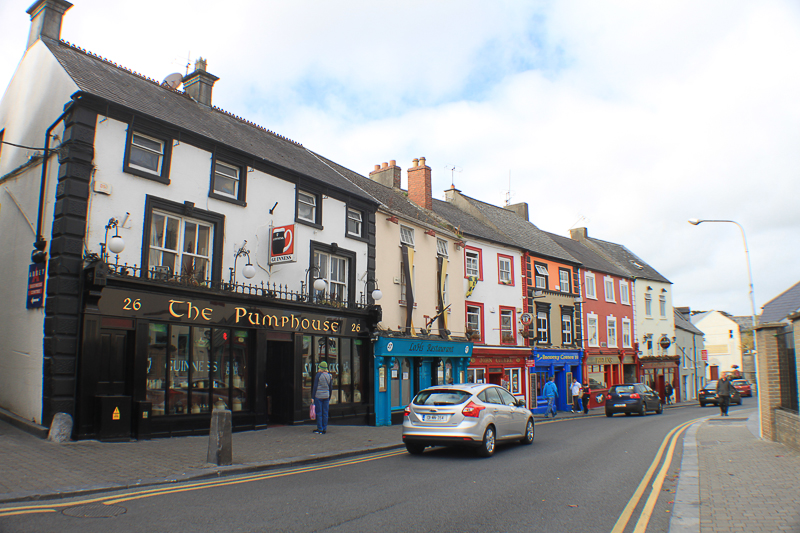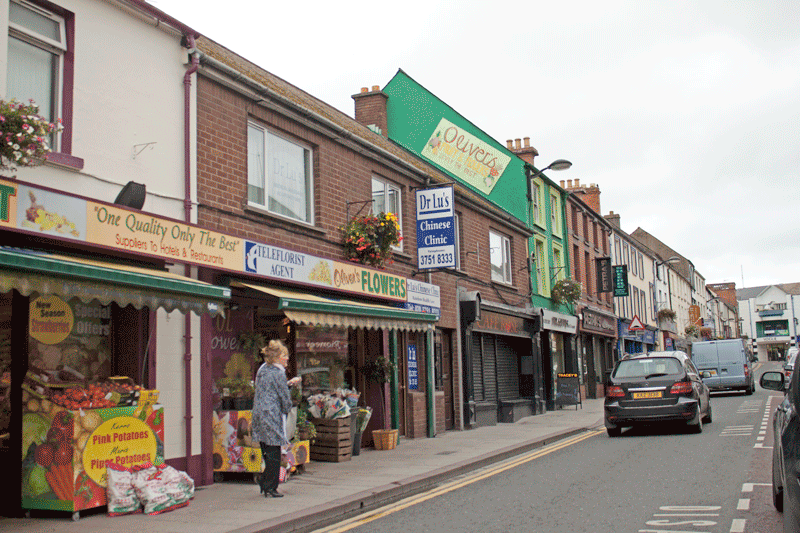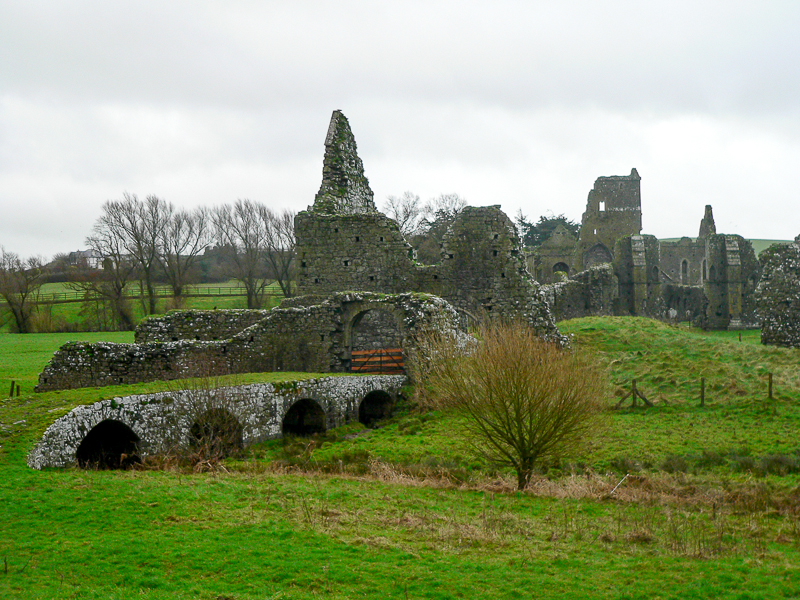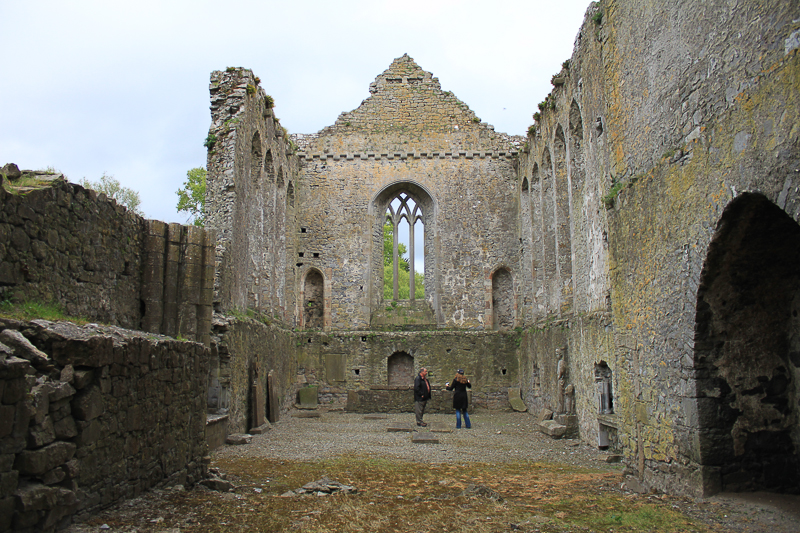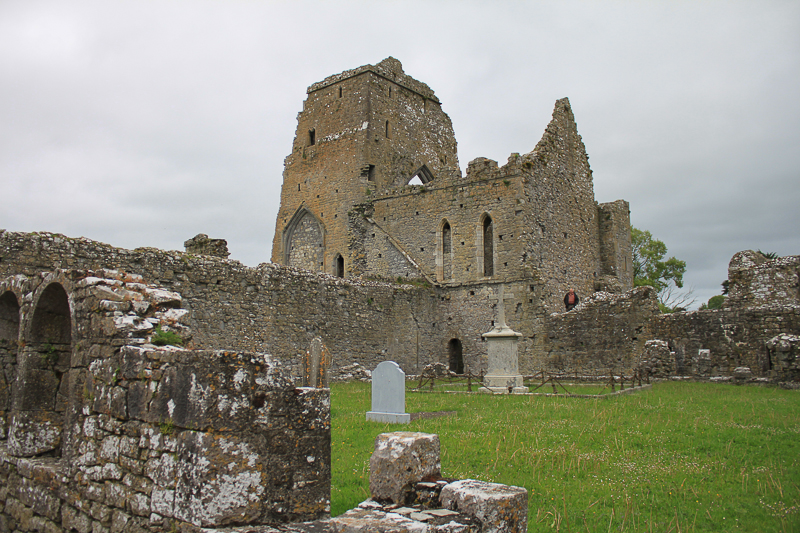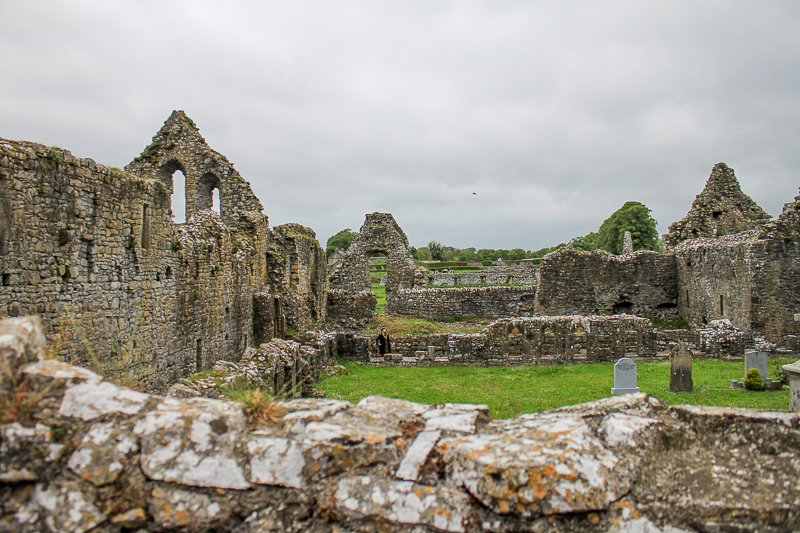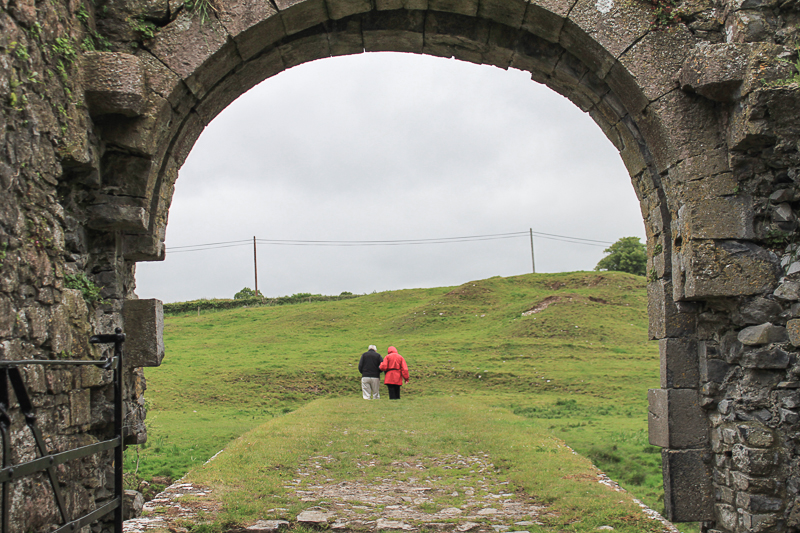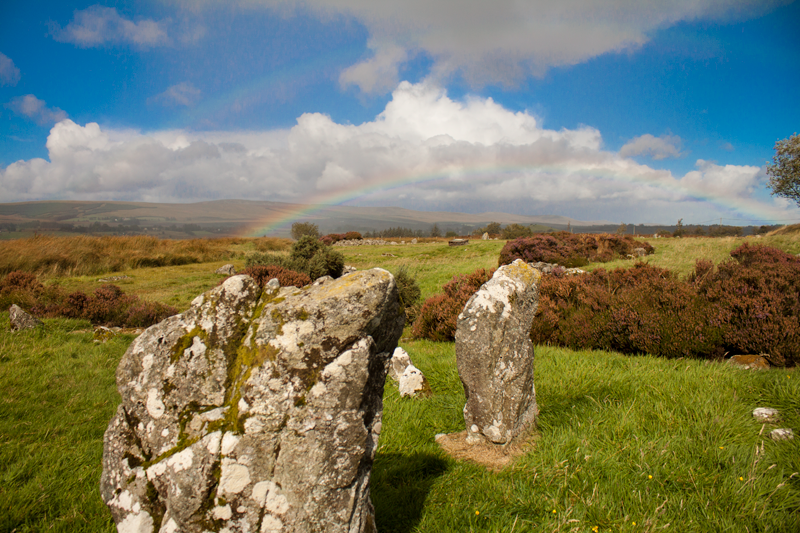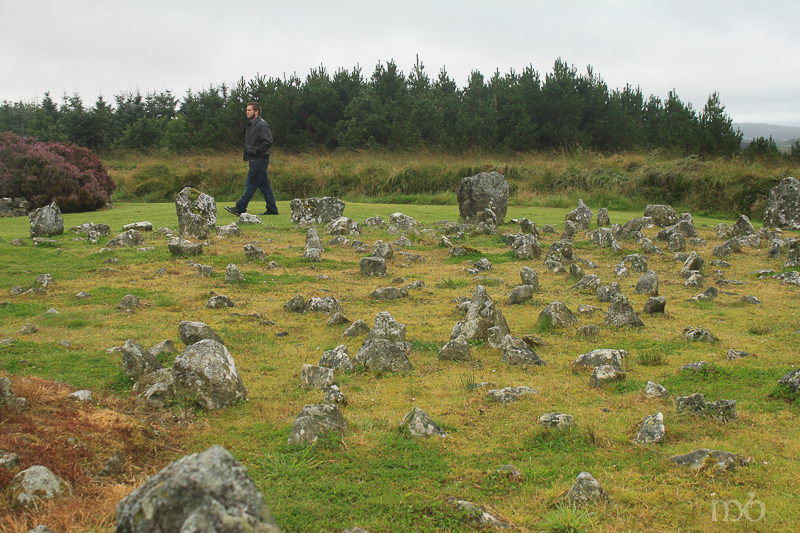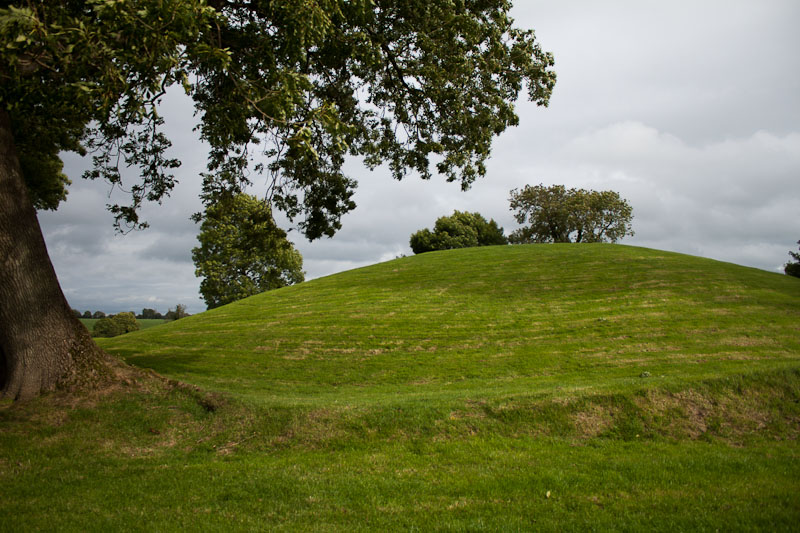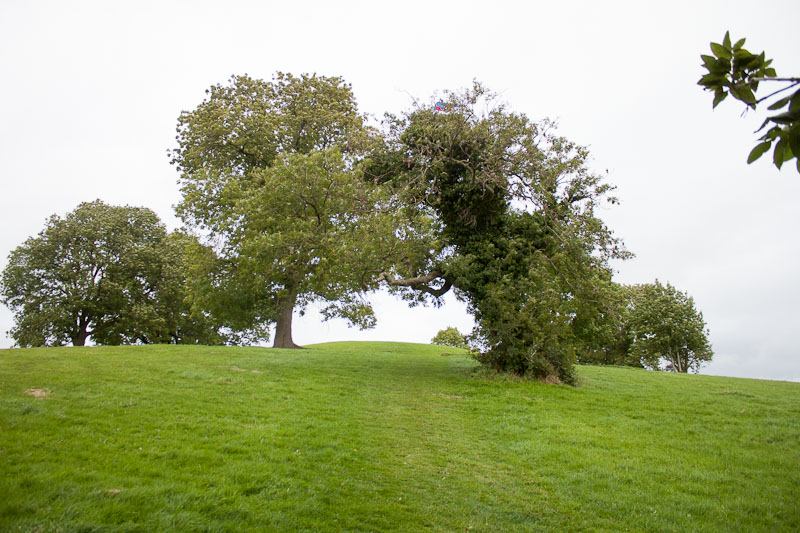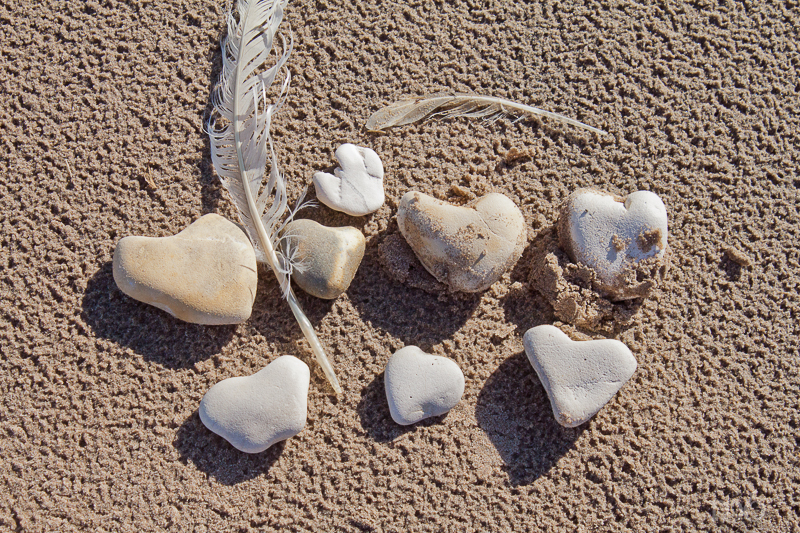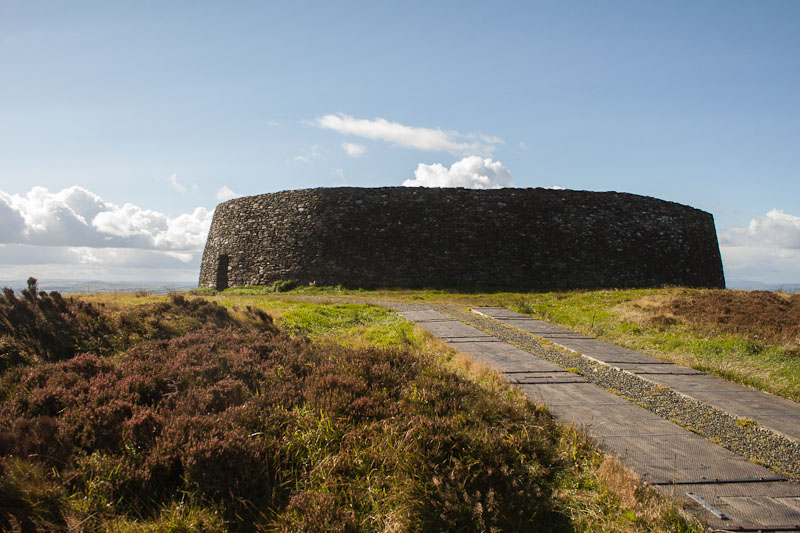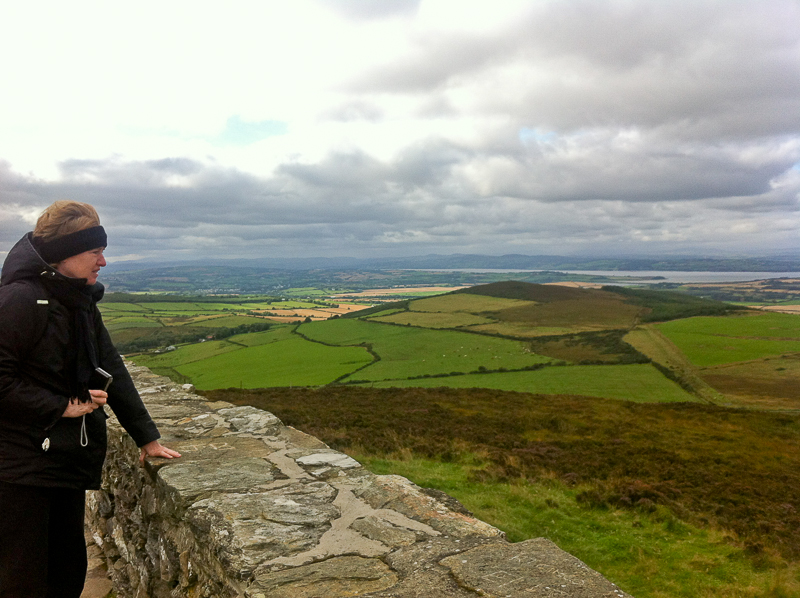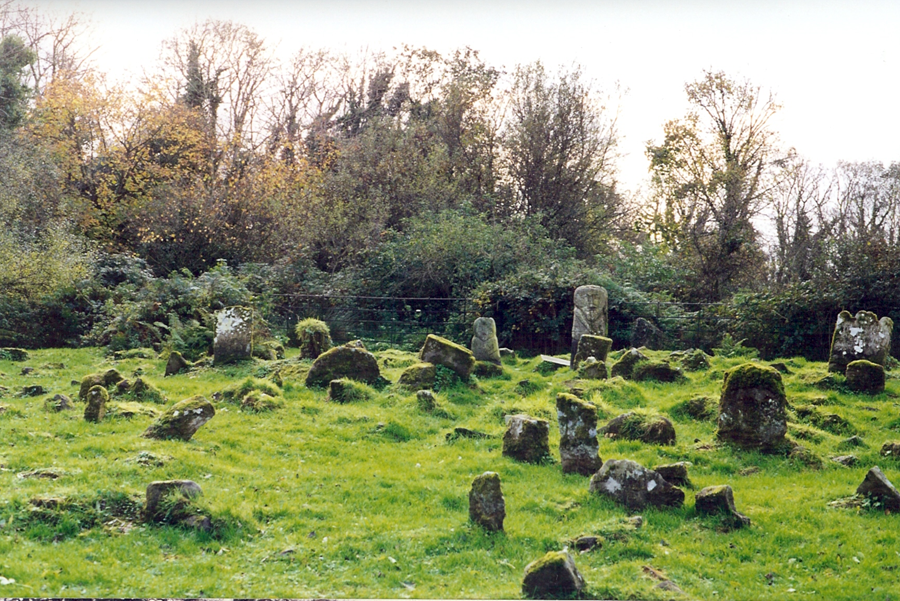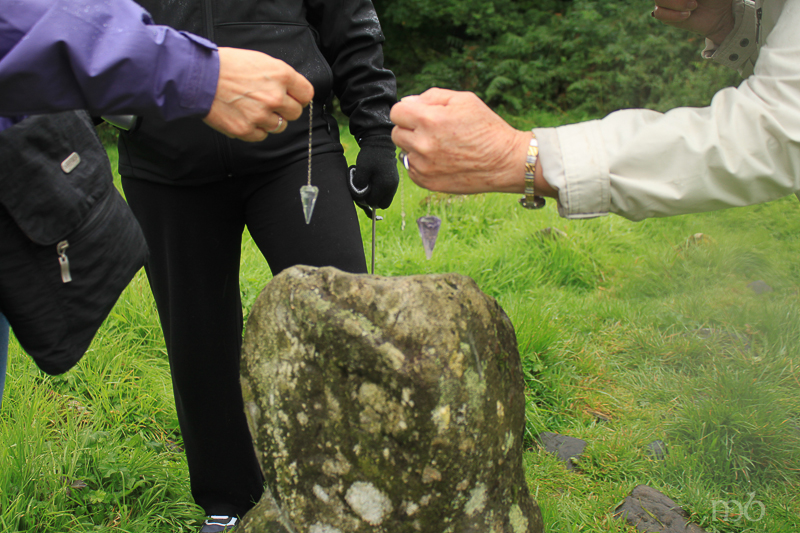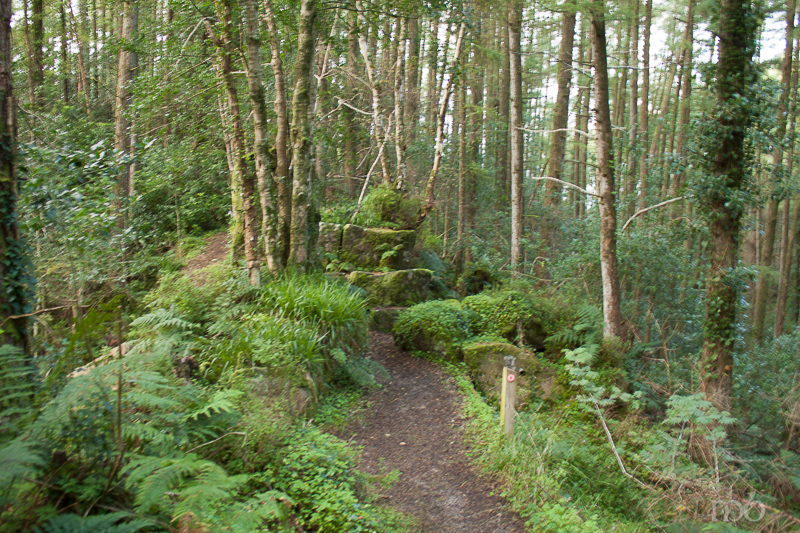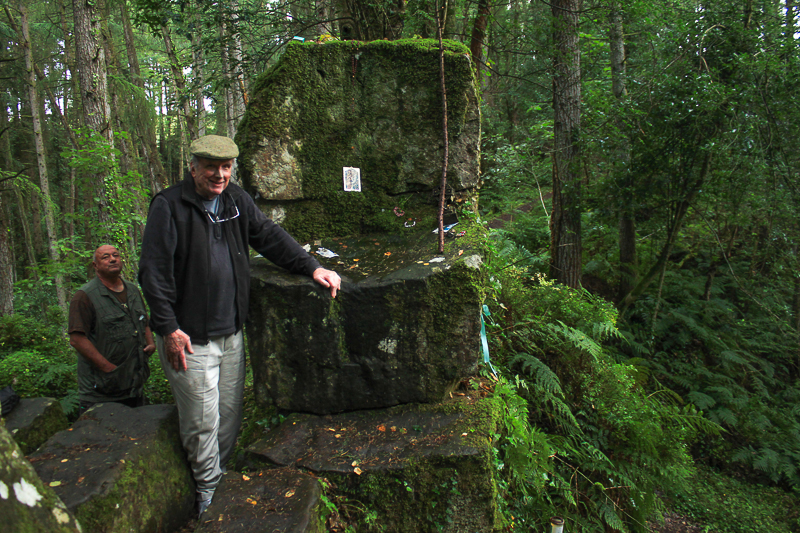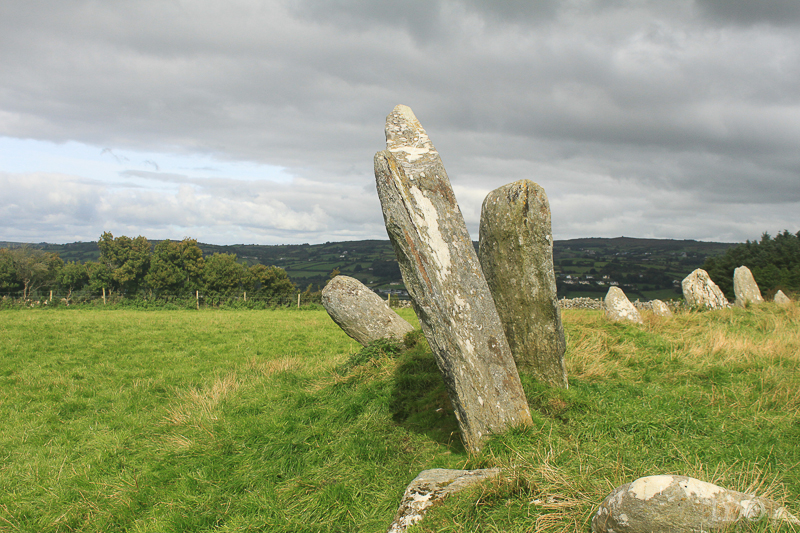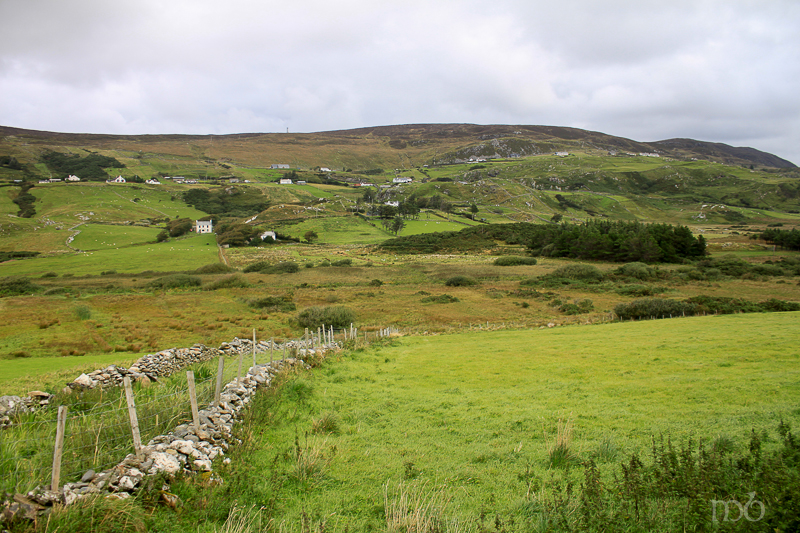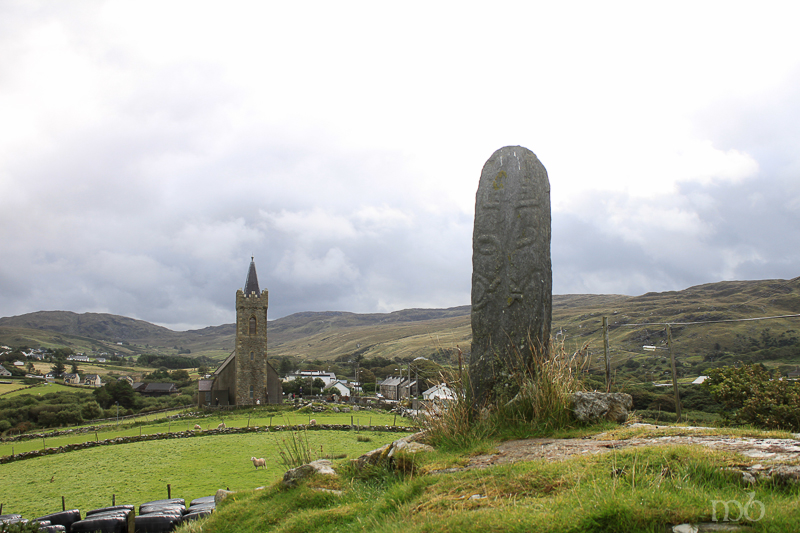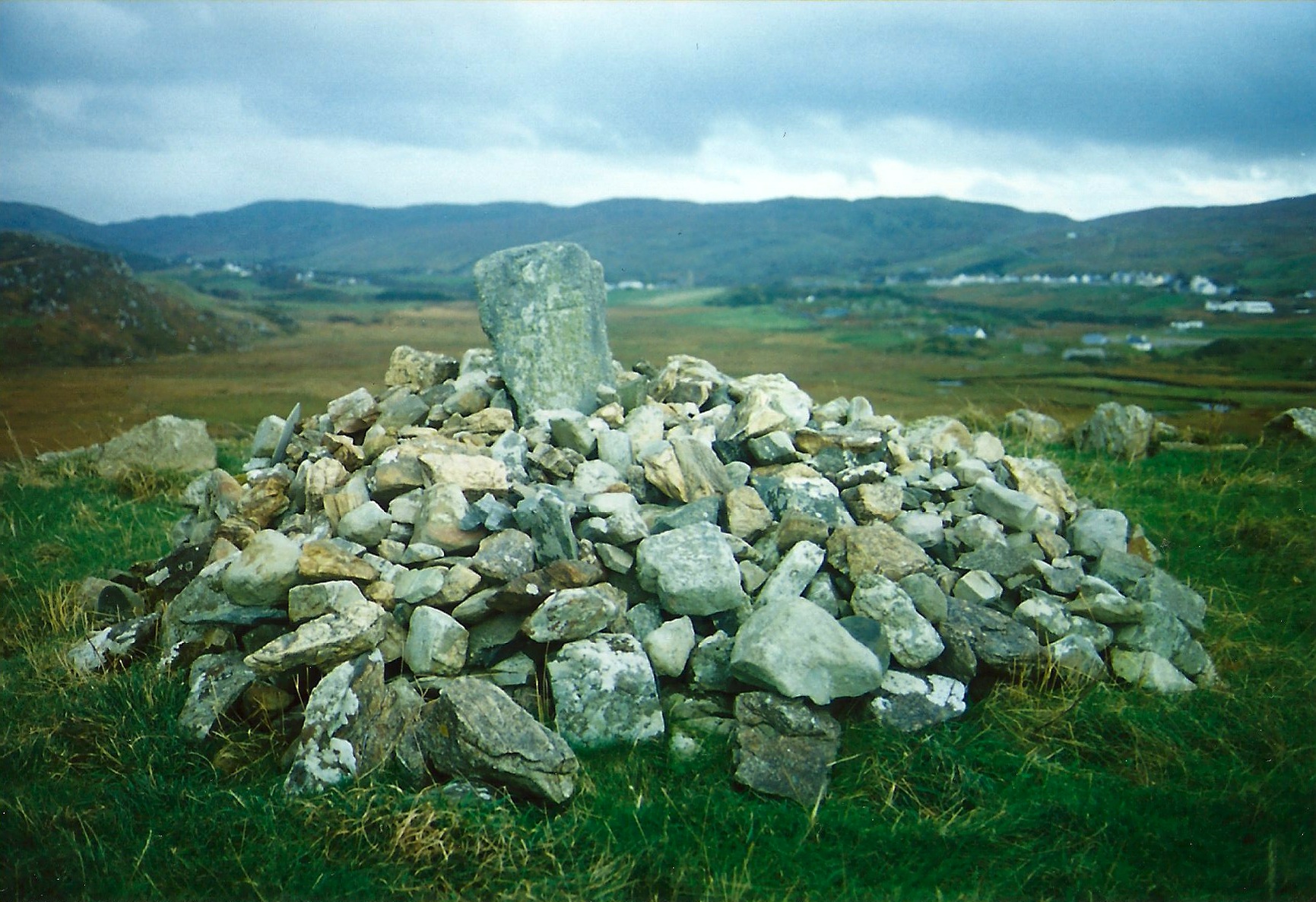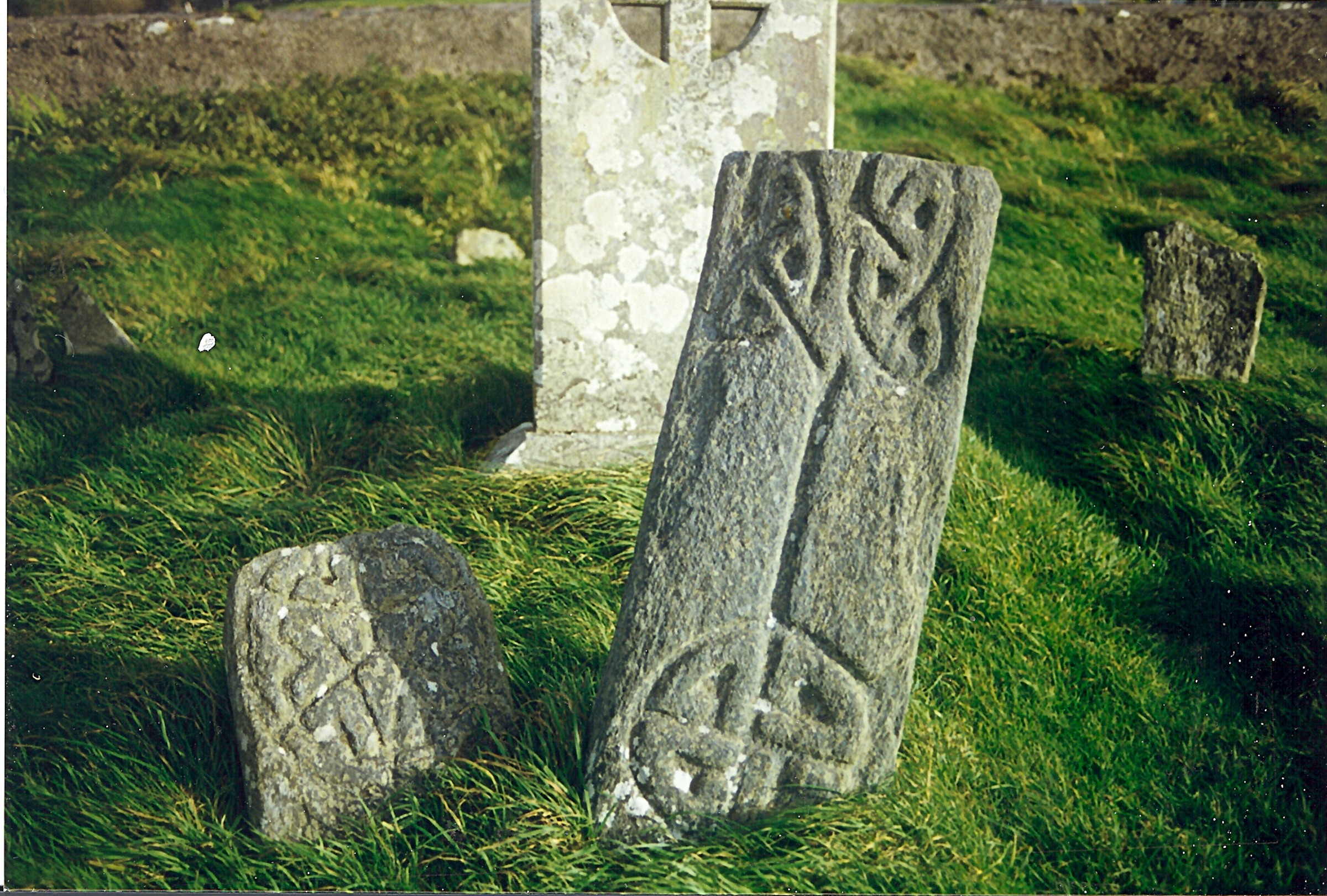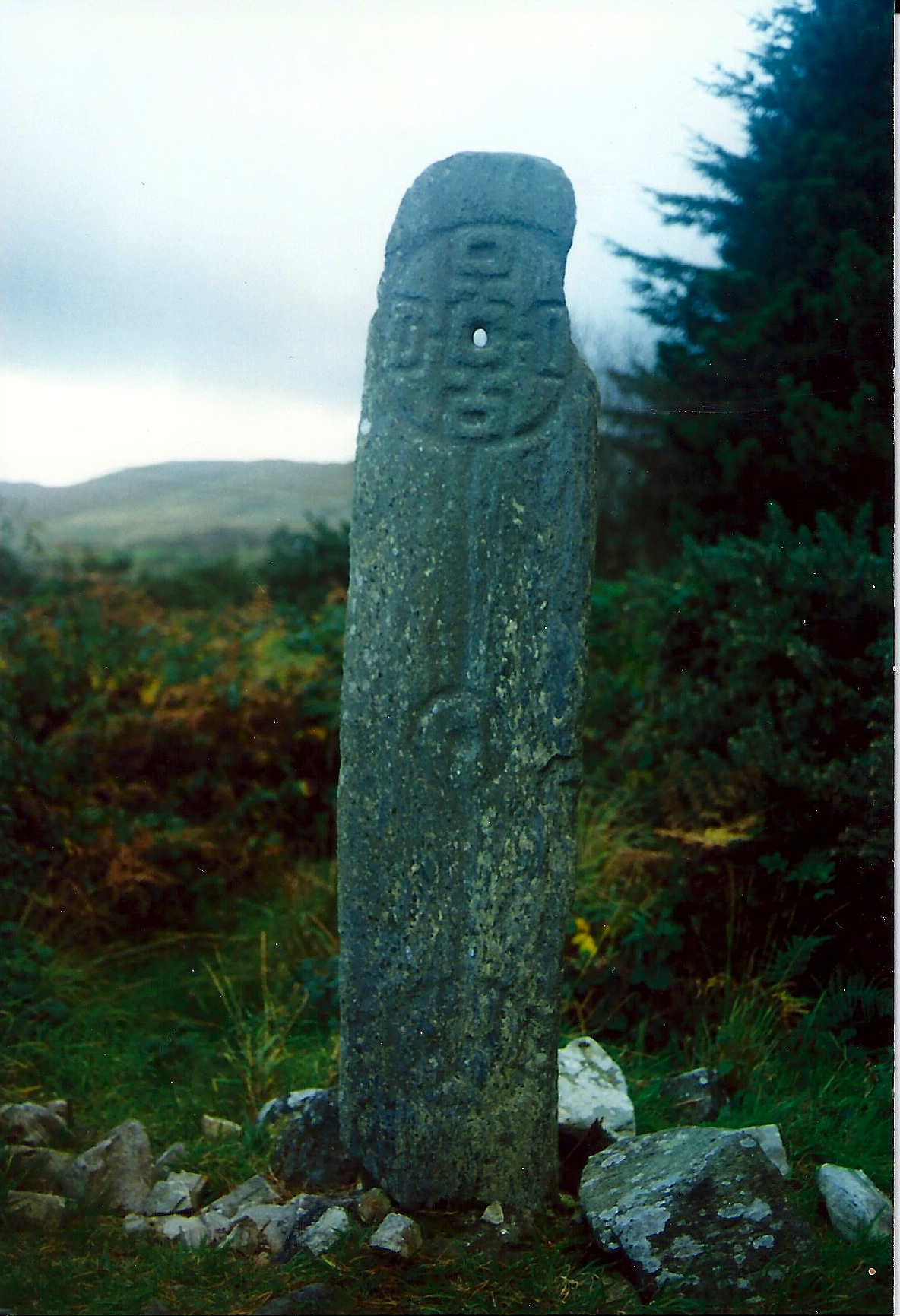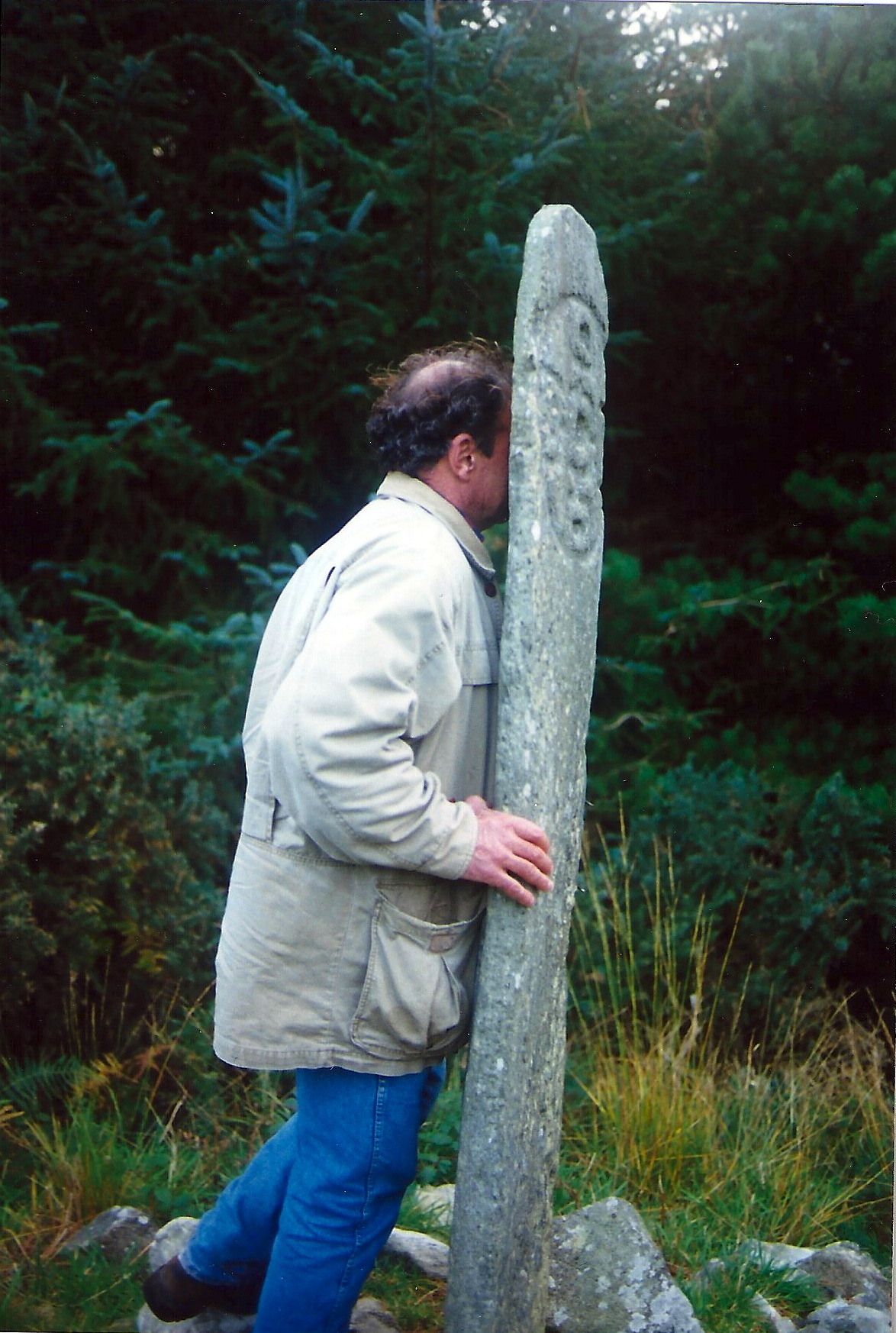Downpatrick Head Ireland
Downpatrick Head in Ireland is on the north coast of County Mayo. It was named for St. Patrick because he is believed to have built a church there, and there still are remains of an old church and a stone marker that supposedly shows where St. Patrick’s original church stood.
Downpatrick Head Ireland
As you approach Downpatrick Head the land opens up in a vast plateau overlooking the wild Atlantic Ocean. You are walking into one of the many “wild places” in Ireland. Even the most boisterous of travel groups will become quiet as they approach the cliffs. The landscape pulls each person into a walking meditation. It almost demands silence.
There’s a lovely cliff walk where one can survey the crashing waves of the Atlantic Ocean against the patterned cliffs while hundreds of birds roost in the crevices and swoop and dive all around the cliffs. We were there in May when the “sea pinks” were in bloom and we couldn’t resist taking pictures of them on the cliff tops.
We spent the morning in this magical thin place never noticing the passing of time.
There is also a holy well and a memorial to 25 Irishmen who fled from British Redcoats during a 1795 uprising. They hid in the caves at Downpatrick Head, but couldn’t get back out before the tide came in and flooded the cavern. They all perished.
But Downpatrick Head is best known for Dún Briste (Broken Fort) or “the sea stack” which is an outlying stone stack just off the cliff face. The landscape there defines “wild” which is so common to the West of Ireland.
Dún Briste – (broken fort) the sea stack is the landmark most associated with Downpatrick Head in Ireland on the north coast of County Mayo.
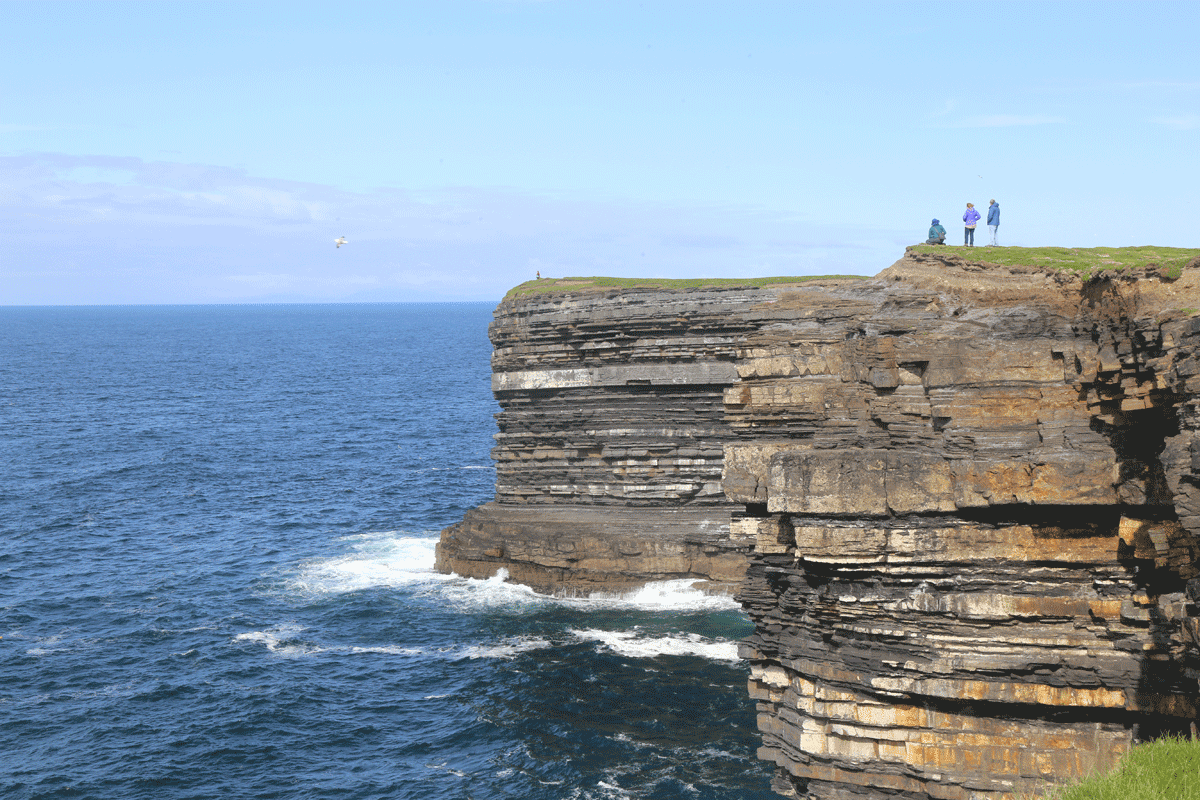
My mind frequently wanders to Ireland. In those rare, still, moments when I can close my eyes and imagine certain places, I almost always go to Ireland. In my imagination, I often place myself at Downpatrick Head. I contemplate the time change – Is it daylight or night time? Where is the moon (or sun)? Is it raining, cold, warm? Are the flowers peeking through the grass? I hear the sound of the waves, the wind, the birds. I feel the damp air. In my mind, I notice all of the details.
Once I settle into that landscape in my mind, the colors take over, then the sounds, then finally — the wind. It seems there’s always wind blowing in Ireland.
I’m reading a fantastic new book by Robert Macfarlane entitled Landmarks, which is about the language that developed around elements of the landscape in the UK and Ireland, and the power of “landscape language.” McFarlane comments in the very first chapter about language shifts that move away from nature and toward technology.
“…Under pressure, Oxford University Press revealed a list of the entries [in the new Oxford Junior Dictionary] it no longer felt to be relevant to modern-day childhood. The deletions included acorn, adder, ash, beech, bluebell, buttercup, catkin, conker, cowslip, cygnet, dandelion, fern, hazel, heather, heron, ivy, kingfisher, lark, mistletoe, nectar, newt, otter, pasture and willow. The words introduced to the new edition included attachment, block-graph, blog, broadband, bullet-point, celebrity, chatroom, committee, cut-and-paste, MP3 player and voice-mail.”
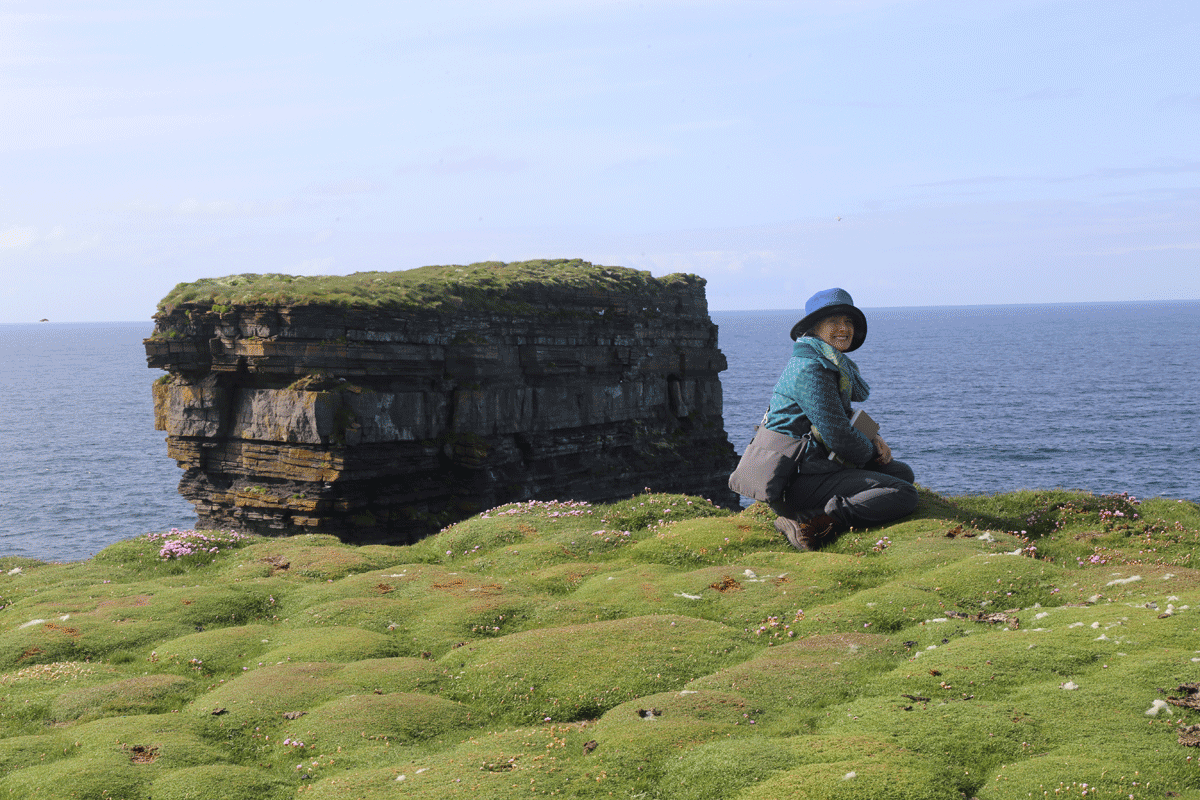
I plead guilty to loving technology, gadgets and the amazing world of telecommunication, but I’ve never embraced it at the expense of stopping and noticing the details in nature.
Sheep roam all over the cliffs at Downpatrick Head … just as they’ve been roaming for centuries. I wonder if they notice the details. Probably not.
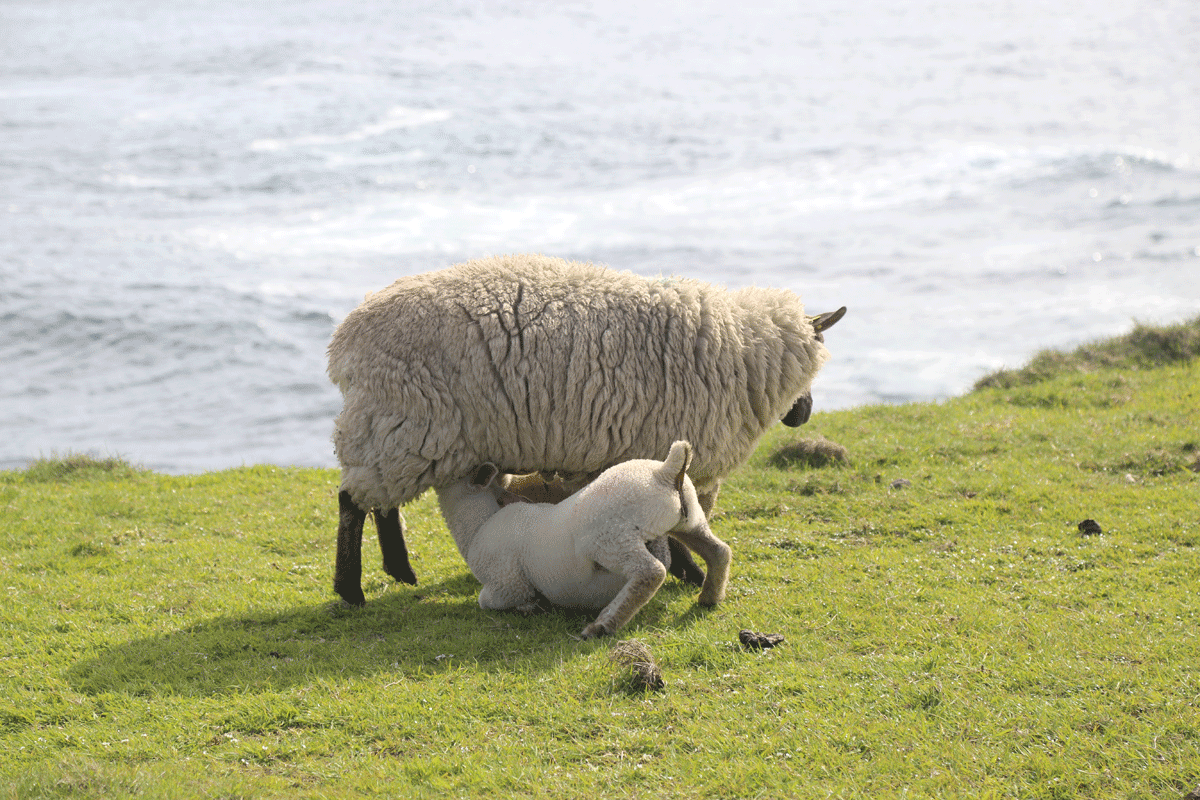
Downpatrick Head Sheep
Here’s to March … and here’s to Spring … and here’s to noticing the details. Those details – the things we only notice when we stand still and look – are the things that connect me to the thin places.
We explore Downpatrick Head is on some of our Thin Places Tours of the Wild Atlantic Way in Ireland.
Photos by Dan and me (Mindie Burgoyne). Special thanks to Joe McGowan and John Willmott who helped identify “sea pinks” and their healing properties.
Discover the North Tour 2016 Begins with the Blessing of St. Brigid

Statue of St. Brigid at Tobar Bride – St. Brigid’s Holy Well in Kildare
The 2016 Discover the North tour started in Dublin today as our 18 guests arrived at Dublin Airport from many parts of United States and Canada. One of our favorite places to take guests on the first day is to Solas Bhride – a center in Kildare run by Brigidine sisters who provide a warm welcome and the blessing of St. Brigid.

Sr. Phil talks about the tradition of the St. Brigid’s Cross at Solas Bhride
Our guests gathered for the first time as a group today at 1pm for a short meeting. Then we boarded our bus in the rain. It was a damp, dreary day. But the dismal atmosphere lifted when Sister Phil and Sister Mary met at the door of this Christian spirituality center that welcomes people of all faiths and of no faith within the context of the Solas Bhride vision to unfold the legacy of St. Brigid and its relevance for our time.

Sr. Phil weaves a St. Brigid’s Cross – Solas Bhride
I can’t think of a better place in Ireland for bringing people together for the first time. After a brief tour of the center, Sister Phil arranged the group in a circle and wove a cross of St. Brigid. With each rush she wove into the cross, she asked the group what they would like to “weave” into their journey this week. As members of this newly formed tour group called out things like friendship, forgiveness, humor, love, respect, St. Phil added a rush to the cross – each rush representing a hope for the journey. At the end she presented me with the cross, and we’ll keep it on the bus in plain sight as a reminder of the blessings received at Solas Bhride…. as we move through these coming days together.

Sr Phil presents the cross to me (Mindie Burgoyne)
The traditional blessing of the St. Brigid’s Cross to be hung in the home is:
“May the blessing of God and the Trinity be on this cross, and on the home where it hangs and on everyone who looks at it”
So we’ll shift that bit and substitute the word “bus” for home and keep at a point of focus on our journey together.
After Solas Bhride (means the light of Brigid), we went around the corner to “Tobar Bride” – St. Brigid’s holy well – a site of local pilgrimage where the water from a holy well runs out to little spring that flows around a small island with a bronze statue of St. Brigid holding a crozier and a flame. (see image above) The peace is palpable in this place.

Clooties on the tree at St. Brigid’s Holy Well – Kildare
There’s a clootie tree by the well (sometimes called fairy tree or rag tree) where pilgrims leave tokens of devotion – something that represents an intention left behind. Today was an interesting array of clooties.
I still believe that every person on our thin places tour was called to that particular tour for a reason. We all have been called to be a collective part of the “whole” that will make up this tour. The first day is always a prayerful time for me. I pray everyone is blessed, inspired, enlightened and celebrated.

Part of our Discover the North 2016 tour group at the welcome dinner in Dublin
So Dan and I welcome you all – Julie, Suzanne, Karen, Richard, Cheryl, Don, Tricia, Anita, Marianne, Kathy, Moyra, Karen, Eleanor, Sally, Jen, Ann, Ruth and Danny.
Here’s to Ireland, new friends, new discoveries and thin places.
Images in the Landscape Tour
The Images in the Landscape tour of thin places in the West of Ireland starts in two days, but the complete journey includes the anticipation that comes before travel when we imagine the journey.
So according to that understanding I am already traveling because I’m full of anticipation.
In 2012, I guided a small group of guests on a 10-day thin places tour in the West of Ireland. One of our stops was Coole Park, the home of Lady Augusta Gregory. She and William Butler Yeats and several others were behind much of the Irish Literary Revival in the early twentieth century. Her manor house is gone now, but the grounds, which include formal gardens, a lake and seven woodlands still appear much as they did when she was there overseeing them.
In 1931 Lady Gregory wrote about the grounds around her home:
“These woods have been well loved, well tended by some who came before me, and my affection has been no less than theirs. The generations of trees have been my care, my comforters. Their companionship has often brought me peace.”
As my tour group entered Coole Park, I overheard a park guide addressing a group of tourists. He said, “You have all now just become an image in an ancient landscape.” I thought about the phrase as I continued to walk. Later, that same phrase became a powerful meditation mantra for me.
How many ancient landscapes do we walk through in this life? And how many times are we are reflective enough to connect with them … to become a part of them … to sense the past that swirls around us?
Claiming that Space Between the Inner and Outer Ancient Landscapes
Since that walk in Coole Park three years ago, I’ve led four group tours to Ireland’s thin places, and today I am getting ready to do another, and we’ll be cycling back to Coole Park. The name for this tour is Images in the Landscape. So now …. a phrase dropped by a tour guide in one little slip of a moment will set the tone for the traveling experience of eighteen people.
We will be visiting Coole Park and its ancient landscape that is reminiscent of when Ireland was covered with hardwoods and deep forests, but we’ll also visit the Burren and its sweeping moonscape of rock and megaliths. We’ll journey out into Lough Corrib, a lake named for the mythical Lord of the Sea. And we’ll land on Inchagoil – Lough Corrib’s most famous island. Inchagoil takes its name from the old Irish words for “Island of the stranger” memorializing a devout man who once lived there.
We’ll wind our way through Connemara and absorb that awesome light while following one of Ireland’s most renowned archeologists, Michael Gibbons on a private tour of Connemara’s hidden landscape. Then we’ll head for Crough Patrick – the holy mountain in County Mayo, and the ruins of Murrisk Abbey at the foot of the mountain. We’ll visit Achill Island, sitting atop a bedrock of amethyst. The island radiates a healing energy while it hypnotizes visitors with its scenic coastline. We’ll walk through the Bricklieve mountains and explore a cluster of passage tombs that pre-date the pyramids of Giza. And we’ll stand on the ancient Hill of Uisneach in the mystical center of Ireland and feel the pull of the magnetic energy there.
The Journey Begins with Anticipation
The journey does not begin when we first arrive at the intended destination. It begins with the anticipation of what will come, of what we will see and learn and experience. Part of that is also worry and fear of the unknown. Travel can be unsettling for some. In looking forward to a journey, we wonder who we will meet, what challenges we’ll face, how we’ll feel once we get there and what the pleasant surprises will be. All of the forethought is part of the journey experience.
The first step in travel – we imagine the journey.
The key learning experiences – the crux of the travel story – the high impact part of the journey – the things that change us are all held in the difference between how we imagine the journey and what the journey actually is. Those differences teach us and change us. Our best memories will be embedded in those differences.
I’m Imagining This Journey
Today I imagine meeting sixteen new friends, and I expect I’ll be changed just a little by each one of them. I look forward to walking up the Hill of Uisneach and touching the Cat Stone and surveying six counties from the summit and feeling that sense of coming home. I’m excited about meeting Michael Gibbons and seeing Connemara through his eyes. I imagine all of things he’ll teach us as we walk that ancient landscape with him. I imagine Inchagoil – and its ruins … and the presence that those ruins still cling to. That will be a new site for me.
I also worry. Worrying about travel is also part of the anticipation. Will the guests get along? Will it rain too much? Will the some of the walking be too difficult for our guests – and how will we handle that? Will the hotels have everything in order? Will I remember everything?
The West of Ireland is Magical
Despite my worries, I know that the “Wow!” moments for the guests on this trip will be remarkable. They’ll never forget the Hill of Uisneach. They’ll be stunned by the raw beauty of Achill Island. They’ll learn so much from our three local guides, Tony Kirby, Michael Gibbons and Mike Croghan. And besides that… I believe no one can drive through Connemara and not be changed. It’s like walking through fairy dust. You’re journeying through several worlds there. So I rest a little knowing that the magical western landscape of Ireland in itself is a jewel that embeds itself in every traveler.
I pray for blessings on Terri, Bob, Linda, Gloria, Bev, Lea, Jim, Maril, John, Karen, Ed, Mary, BJ, Meredith, Bonnie and Renee and safe travel. I pray that John, my excellent coach driver and I will be good leaders and sensitive guides and that on September 20th when this tour is over, our imagined journey will be magnified and expanded by our actual journey and that we will all move forward together.
12 Pictures that Will Make You Want to Tour Ireland
Ireland and its thin places have such a draw for those interested in traveling a bit deeper into the landscape. Here are 12 pictures that show some of these amazing places. All of them are on our Castles, Saints & Druids Thin Places tour this September 2014. Join us!
1. The King Oak
The King Oak is said to be between 500-800 years old. It’s part of an ancient oak forest once sacred to the Druids, then later the site of a monastic community. The forest entombs Charleville Castle, a gothic-style castle built from 1798-1812. The King Oak ranked #3 in Europe’s Tree of the Year 2013 and it’s a familiar old spot to the people around Tullamore. Many a romance started and ended beneath the branches of this tree. The spread of the lower branches spread out over 150 feet from end to end. This oak is set in an ancient grove with other trees that are hundreds of years old. When the British invaded Ireland and occupied the country, they ravaged the land, stripping it of all its forests, then exported the wood for profit. Fortunately this oak forest was part of a 1700 acre “gift” from Queen Elizabeth I to the Moore family. The gentry tended to keep the trees on land around their homes. This oak forest has been considered magical for centuries.
2. Charleville Castle
Charleville Castle was built by the Earl of Charleville between 1798 and 1812 in an ancient oak forest near Tullamore. The site was formerly occupied by the Lynally monastic community, and before that was used by the druids for sacred rituals and ceremonies. It is currently owned by a non-profit that uses volunteers from all over the world to help restore the castle and bring it into a self-sustaining existence. The caretaker says that the designers of the castle were Masons and positioned the round towers on crossed ley lines which creates a powerful energy field in the tower rooms. The caretaker also has experienced ghostly sitings that include druids, the Earls of Charleville and the castle designer. Many believe that a little girl named Harriet who was the daughter of the third Earl of Charleville haunts the back staircase where she fell to her death after trying to slide down the bannister. Charleville Castle and its surrounding oak forest is considered one of the scariest places in Ireland.
3. Castleruddery Druid Stone Circle
Castleruddery Stone Circle in County Wicklow is a Bronze Age Druidical circle once used for ritual. There are a total of about 40 stones on the site but the circle itself has about 20 standing stones places on a raised embankment. This would have been a place of great importance based on the geographic layout of the stones, embankment and ditch that is dug outside the embankment. Two large quartz stones mark the portal (entrance) of this circle. Quartz in an amplifier of energy and believed to have healing properties. Some locals from this area believe this stone circle has healing properties. There is also a fairy tree in the circle (pictured here). The roots are wound around a standing stone. Some of the stones have cup marks carved into them and notches carved across.
4. Glendalough
Set in the Wicklow Mountains, Glendalough (meaning valley between two lakes) features the ruins a Medieval monastic city founded by St. Kevin in the 6th century. In the last two centuries it’s been used as a graveyard for local families, but the old bones of the monastic city can still be seen in the hilly landscape. ruins of churches, round-towers, buildings dating from the 9th to 13th century make this site absolutely enchanting. The views of the glen and lakes and babbling stream connecting the lakes are also remarkable. Our Castles, Saints and Druids tour group will be overnighting in the Glendalough Hotel in September.
5. St. Kevin’s Kitchen – Glendalough
St. Kevin’s Kitchen is a 12th century church in Glendalough, and often used as a defining landmark for the ancient monastic city. The church has a stone roof with a round tower built into the roof. Round towers were used for bells, for look-out stations to see people approaching from a distance.
6. St. Berrihert’s Kyle – Glen of Aherlow
St. Berrihert’s Kyle is a round structure built by the local people from pieces of an old monastic ruin. It was made to mark a Cillini or burial ground for unbaptized babies and others not qualified for sanctified ground. The kyle is a complete circle set in an oak grove in the Glen of Aherlow in County Tipperary. Pilgrims travel from all over to pray here. They leave behind devotional tokens – some very rare. These tokens are offerings left in hopes that their prayers will be answered. There is also a holy well (more like a small pond) nearby that is flanked fairy trees covered in clooties, also left by pilgrims.
7. The Rock of Cashel
If the Rock of Cashel doesn’t inspire you, nothing will. This cluster of ruins atop a rocky hill in County Tipperary can be seen for miles. It always reminds me of Emerald City in the Wizard of Oz. The Rock is set in the middle of agricultural land known as the “Golden Veil” because of the bounty of food it produces, and that land is ringed by mountains. The views from the Rock are stunning, and the energy and power of the site radiates in almost fearsome abundance. This is a must-see site in Ireland.
8. The Hill of Tara
This is the Lia Fáil or Stone of Destiny perched atop the Hill of Tara – a corronation site once used for crowning the High Kings of Ireland. An old legend states that if the true High King was crowned, the Lia Fáil would literally cry out or roar. If this stone looks phallic to you, that’s because it’s meant to look that way. The ancient pagans didn’t have the sexual hang-ups of our present world. They believed that male and female were two aspects of the Divine. In this case the stone may represent the male Divine aspect in union with the female aspect (the earth). The stone is believed to have magical properties – those properties were demonstrated the roar of the stone during coronations. The Hill of Tara has a brilliant earth energy.
9. Newgrange Passage Tomb
Newgrange, the Boyne Valley is Ireland’s oldest building remaining fully intact. The tomb dates back 5000 years, predating the pyramids of Egypt, Stonehenge and all the other tombs and prehistoric enclosed structures in Ireland and Britain. Newgrange was a center for spiritual ritual and has remained intact since the Stone Age. The inside is large with a center chamber large enough for 20 people to stand and three side chambers. The entrance is shown in this image (center). Above the opening the tomb is a stone lintel which allows the passage of light to penetrate the pitch blackness of the tomb during the sunrise on the Winter Solstice (December 21) – the shortest day of the year. Visitors to Newgrange can walk deep into the passage tomb and a guide uses an electric light-beam to demonstrate the shift from dark to light during the Solstice sunrise.
10. Sheela-na-Gig – Kildare
There are people who search for Sheela-na-gig’s all over Ireland and in other Celtic countries. These figures are usually primitive carvings in stone that depict a female revealing her genitals with legs spread wide open … usually with some kind of angry face. Some say the Sheelas were fertility goddesses, others believe they a defense against evil or bad energy similar to the function of a gargoyle. They are often found over doorways or beside entryways in churches and castles. Ireland has the most known Sheelas of any country (101). This Sheela-na-gig is hidden under the altar at St. Brigid’s Cathedral in Kildare. As our Thin Places tour group wandered through this beautiful and ancient cathedral, one of the cathedral staff people pointed this out to me. It was tough getting a picture (had to practically lay on the floor), but it was well worth it.
11. Leap Castle
Leap Castle is still being restored by its owner, musician Seán Ryan and his wife. The castle located in County Offaly was built by the O’Bannon clan in the 13th century, and later came under the ownership of the O’Carroll clan. It is said to have been built on a former ceremonial site used by the druids, and archaeologists estimate there has been human habitation on the site since the Iron Age (500 BC). Leap is famous for being haunted, probably because of the violence that has occurred there. The O’Carroll clan, warring over leadership resolved the conflict when one brother (a priest) was saying mass for his gathered family members in the chapel on the upper floor of the tower. Another brother burst through the door and murdered the priest with his sword in front of the family. Thereafter the upper floor of the tower was known as “the Bloody Chapel.” Leap also has an “elemental” or non-human spirit that has been seen as a shadowy figure that makes mischief.
12. Kilkenny – Downtown
While we all love thin places and mystical landscapes, no travel to Ireland is complete until the visitor gets to experience the Irish culture, and Kilkenny is certainly a vibrant town of culture. The name Kilkenny originates from the Irish words that mean Church of Canice and St. Canice’s Cathedral and round tower sitting atop a hill anchors one end of the city while Kilkenny Castle anchors the other. In between are shops, galleries, pubs and heritage sites. This was once a hub for monastic communities. The Grey Friars were here as were the Franciscans – St. Francis Abbey is now home Ireland’s oldest operating brewery which makes Smithwicks and Kilkenny beer. Walking the Kilkenny’s downtown is an excellent way to engage in conversation with the Irish, and the most memorable thing you’ll do on a trip to Ireland is engage with the Irish people.
All of the pictures above and the sites mentioned are part of our Castles, Saints and Druids tour for 2014. It runs from September 11 – 21st. It is a small, specialized tour focused on mystical sites ranging from the ancient druids to the monastic communities through the times of the British occupation. The cost is $2099 per person + airfare. For more details check out the Tour Itinerary.
St. Patrick’s and St. Patrick’s – Twins, Curses and Blessings in Armagh
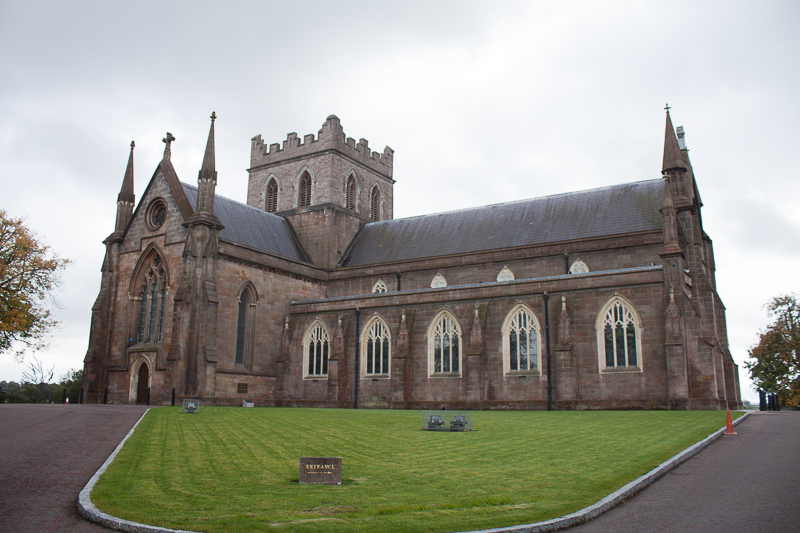 St. Patrick’s Cathedral in Armagh – Church of Ireland
St. Patrick’s Cathedral in Armagh – Church of Ireland
Coming into Armagh from the Monaghan Road one gets a dramatic view of the city skyline, especially at twilight. The view is dominated by two buildings on two hills – St. Patrick’s Cathedral and St. Patrick’s Cathedral.
Both are diocesan bishoprics, both are built on holy ground and both are tied to legends of St. Patrick. One is the Church of Ireland cathedral built on the ancient holy site where St. Patrick is believed to have built his first stone church in the 5th century. The other is a stunning Gothic-style Roman Catholic Cathedral, its cornerstone laid on St. Patrick’s Day 1840. It was completed in the early 20th century, with a serious halt to the construction during the Great Hunger. Armagh is known for being the ancient seat of the Ulster kings and the place that gave us the Knights of the Red Branch and Cuchulainn – the Hound of Ulster, a who was the Incredible Hulk of Ireland.
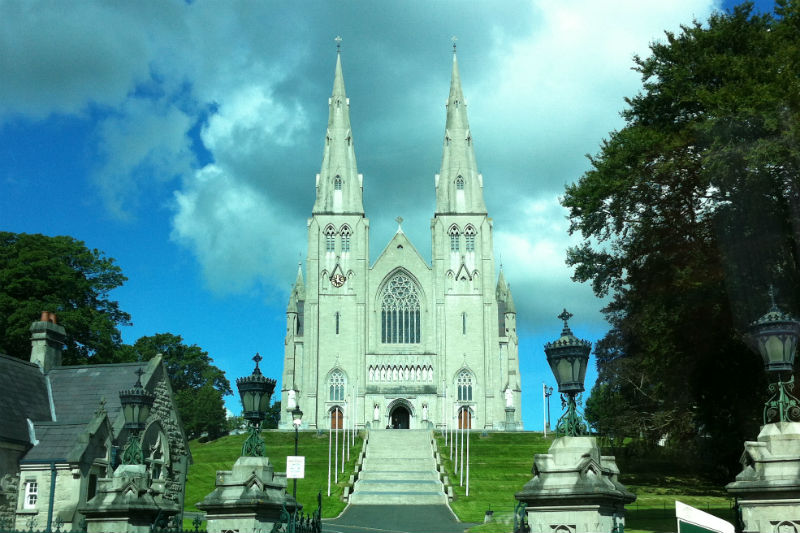 St. Patrick’s Cathedral in Armagh – Roman Catholic
St. Patrick’s Cathedral in Armagh – Roman Catholic
Armagh is also a city defined by twins linked to tragedy and triumph. Armagh comes from two Irish words that together mean the “Hill of Macha” or the “Height of Macha.”
Ard means hill or height and Macha is the name of an Ulster goddess who had super powers enabling her to run faster than any living creature. When she was pregnant and near delivery, her prideful husband boasted to the local king who was also prideful about his swift horses, that Macha could outrun them. The embarrassed king ordered Macha to prove it by racing his fastest horses in a competition staged in the presence of all of his friends.
Macha begged for mercy because she was heavily pregnant, but the king refused her pleas and forced her to run the race. Macha ran – and won. All, including the king were in awe of her strength. But at the end of the race Macha collapsed and died whilst giving birth to twins – a boy and a girl, one representing a blessing and the other a curse on the Ulstermen to last nine generations. The blessing was that Ulstermen would develop great strength and be the mightiest warriors in all the land. The curse was that at the times when they are in the greatest need, they would be stricken with the pains of childbirth and be incapacitated for five days and four nights. The boy went to sea (the otherworld) and met his mother and the other gods and goddesses. The girl stayed behind, motherless in a world that exploited and oppressed her kind.
Twin Cathedrals
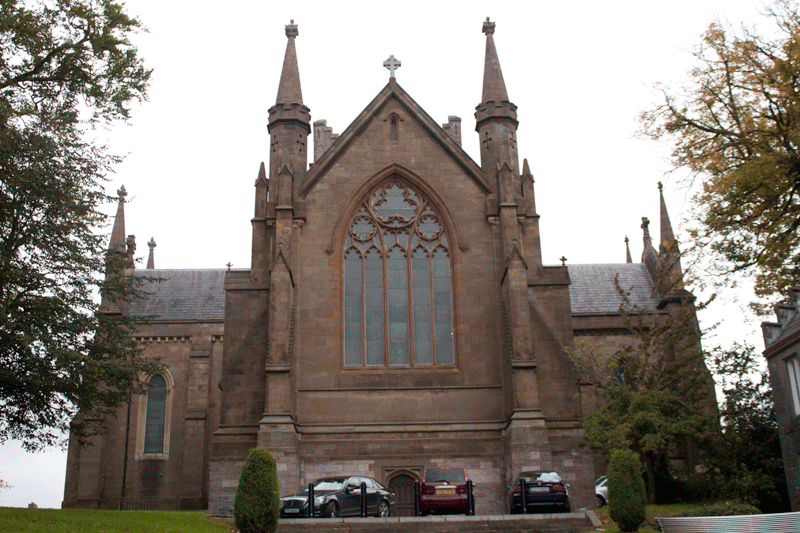 St. Patrick’s Cathedral (COI) in Armagh
St. Patrick’s Cathedral (COI) in Armagh
The twin pinnacles in the Armagh skyline are side-by-side hills each capped with a cathedral of two similar faiths. The two religions have a history of bloody conflict that goes back 700 years. They are the Catholics and the Protestants of Northern Ireland. Some say they mirror the ancient story of the twins of Macha, forced to be birthed violently because of pride, arrogance and greed. One allowed to be the warrior and the other oppressed with little power, forced into servitude. Triumph and tragedy. Blessing and curse.
But today’s Armagh shows few remnants of that conflict. People are warm and friendly, the downtown has nice shops and restaurants. It’s a busy town, but there are only scant traces of the brutal conflict that raged only a few decades. If I hadn’t been to Northern Ireland during the Troubles, I wouldn’t be able to measure the difference. But as a visiting American who traveled there both when the country was occupied and in recent years, I see the radical difference. Today there are no soldiers in the streets with machine guns, or crouching in alley ways, no razor wire, no moratorium on cameras and taking pictures, no tense people who don’t look up as you pass them on sidewalks – locals who provide no warm welcome for visitors… except for a few who were in the tourism business, and even they were guarded.
Armagh and the North – Good Times and Bad
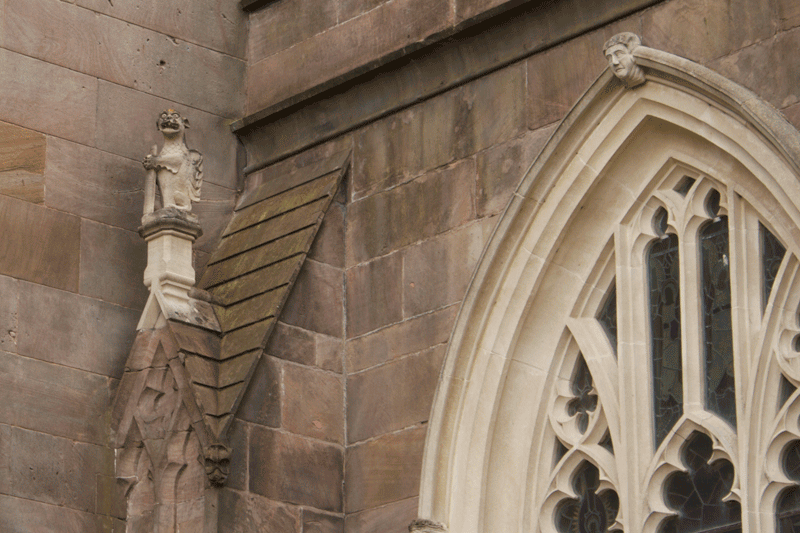 Gargoil on St. Patrick’s Cathedral in Armagh
Gargoil on St. Patrick’s Cathedral in Armagh
Don’t get me wrong. I loved Armagh then and I love it now as I love all of Northern Ireland. The only difference between the two time periods is that the curse is lifted. The two sides want to get along. They want peace. They want their children to be safe. They want to thrive economically and welcome visitors. Both sides know and always have known that they live in a magical land – a land of pristine beauty, a land of stories, a land of mystical energy. They’re eager to share their country’s treasures in the safe environment that has grown out of their commitment to peace. And visitors are very welcome.
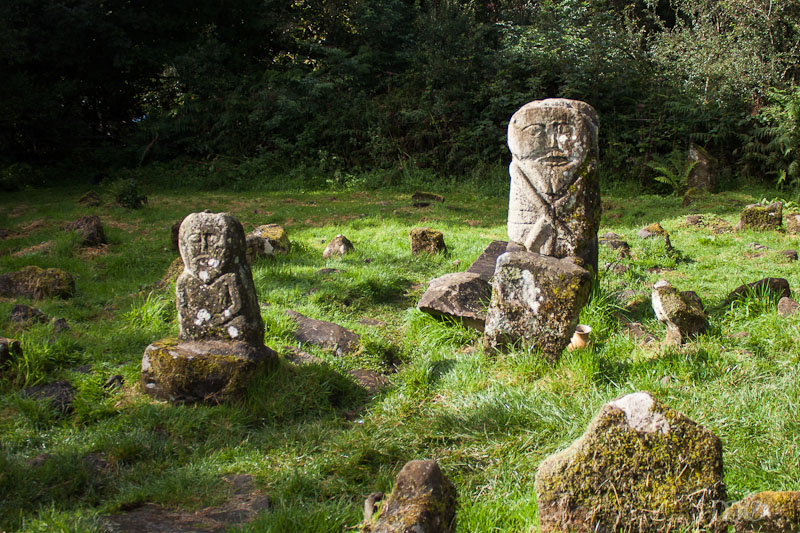 Janus figure – Caldragh Cemetery
Janus figure – Caldragh Cemetery
During all of the troubles and conflict, the ancient Janus figure still stood watch in that mystical cemetery named Caldragh in County Fermanagh. Saint Patrick’s Chair and holy well was still perched in the Altadaven Forest waiting for pilgrims to come forward and present their wishes. The sands of Whitepark Bay still sang in the wind. The stone circles at Beaghmore were still lying in wait in the shadow of the Sperrin Mountains ready to enchant the visitor looking for those spiritual ports in the storm that we call thin places. The North has always been beautiful and worth visiting, but it’s good to see the people of the North enjoying their land and each other.
Discover the North Tour
Both St. Patrick’s Cathedrals in Armagh are a part of our Discover the North tours as are St. Patrick’s Chair, Caldragh Cemetery, Beaghmore Stone Circles, Whitepark Bay and many other mystical sites.
Related Posts –
Padua House and Kathleen O’Hagan of Armagh
Armagh – Twin Symbols of Conflict and Unity
Kildare – St. Brigid’s Holy Well (Tobar Bride)
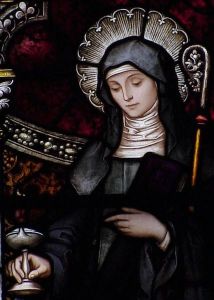 Legend tells us that St Brigid was born near Kildare to a slave mother who was a Christian and very sickly. As a child, Brigid persuaded the Druid master to free her mother which in turn freed Brigid to enter religious life.
Legend tells us that St Brigid was born near Kildare to a slave mother who was a Christian and very sickly. As a child, Brigid persuaded the Druid master to free her mother which in turn freed Brigid to enter religious life.
Kildare is one of the stops on the Thin Places Mystical Tour of Ireland – Castles, Saints & Druids in September 2014.
Since there were no convents in Ireland, Brigid began one in Kildare. The sisters of St. Brigid prayed simply and deeply and served the poor. We know that Brigid was a contemporary of St. Patrick and a strong legend states that she was ordained a bishop because of her superior knowledge and closeness to God.
Another legend is associated with the goddess or holy woman, called Brigid dating back to pre-Christian times in this region. Stories of the two women have been woven and spun into legends and tales that all point to a holy woman, who drew followers to this site and performed rituals that were associated with healing, protection, comfort and help for the poor. The town of Kildare grew up around the community that this woman – Brigid – founded.
Kildare translated means “cell” or church of the oak. Oaks were known to be sacred trees in pre-Christian Ireland which gives weight to the pagan or goddess tradition of Brigid. But it is believed that a Christian woman named Brigid founded a community here around 480 AD, that she was a contemporary of St. Patrick and was recognized for great spiritual wisdom. There are legends that she was ordained a bishop in the church due to her wisdom.
Brigid is now one of Ireland’s patron saints, and is often linked in patronage to farmers and poor pastoral workers – the common citizen, the oppressed Irish tenant farmer of past centuries. It is possible – some say likely – that St. Brigid located her religious community on the spot where the Kildare Cathedral is now situated. 13th century buildings now occupy the spot along with the second tallest round tower in Ireland and an oratory and fire pit which likely date back to pagan times. Legend states that St. Brigid kept an flame burning in the fire pit continually as a devotion to the Holy Spirit. The perpetual flame is still cared for today by the Brigidine sisters who live nearby. For centuries this cathedral site has been a draw for pilgrims – a holy place, a place of spiritual strength.

Nearby is St. Brigid’s Holy Well, and the thinness of this place is palpable. This is actually a secondary well, springing from a known ancient holy well a short distance away. Volunteers and benefactors have created a beautiful setting around St. Brigid’s Holy Well also known as Tobar Bride. A bronze statue of St. Brigid lifting the eternal flame has been added in recent years. Stone prayer stations lead from the well to a running spring.
Wells were considered holy by the pre-Christian Irish being that they sprung from the “underworld” or the womb of the earth. That tradition of holiness exists today. Water from holy wells is believed to have special power for healing and spiritual protection.
“A holy well is very special. To watch water springing from the earth is to witness creation in the act of pure, unconditional generosity. At a holy well, my own interior holy well has an opportunity to make itself known to me.” – Gay Barbizon, Brigid’s Kildare; The Fire, the Well and the Oak.
Upon entering Tobar Bride, the pilgrim can see a small devotional shrine where donations are publicly accepted and welcomed. The old pagan tradition encourages the pilgrim to leave an offering when taking water from the well.
Pilgrims are encouraged to say prayers at each of the seven stations at Tobar Bride. Just past the small devotional shrine is the spring marked by a stone arch. This is the first station. Water flows through two oval shaped stones. Some say these stones symbolize the breasts of the earth – our mother. The bronze statue of St. Brigid is near to the arch.
Past the arch are five standing stones or “stations” that represent a part of Brigid’s nature. Pilgrims pause and recognize these qualities and perhaps pray for the same graces to develop in their own lives.
First stone – Brigid the woman of Ireland, the patroness, the protector of a beloved country.
Second stone – Brigid the peacemaker, healing division, bringing forward unity.
Third stone – Brigid the friend of the poor, advocate of the marginalized, speaker for they that have no voice.
Fourth stone – Brigid the hearthwoman, keeping the home flame burning, welcoming all, woman of hospitality.
Fifth stone – Brigid the woman of contemplation, which leads to wisdom and closeness with the Creator.

St. Brigid’s Holy Well – Kildare
The holy well behind the five standing stones marks the 7th station. It is here that one can pause and reflect, pray for a loved one, and draw water – perhaps to take to a loved one who is ill or to bless a home.
It is traditional belief that a person taking something from (holy water) from a devotional site should leave something behind. Notice the tree behind the well. Dangling from its branches are stips of cloth and other tokens – also known as “clooties” – that have been left behind by pilgrims. The cloth may have been touched to the person for whom the pilgrim is praying. Sometimes pilgrims leave photos or personal belongings behind – things that have touched the person they are praying for. This tree had a baby’s shoe dangling from a branch.
The pastoral setting of this park-like devotional space is near the Curragh – or places where the thoroughbred race horses – famous in Kildare – run and are kept. It is almost impossible not to be moved when entering this space.
This is a very Thin Place.
A Walk to Athassel Priory
A medieval road that has so many stories to tell, stories of laughter, love, terror, murder & life. In a county with such a rich history roads like these have so much to tell, but we have to be their voice.
Tipperary has a built heritage that would put most counties in Ireland to shame. If you threw a stone in any part of this wonderful county you would be hard pressed not to hit a historical site, it maybe stone age, iron age, bronze age or early medieval, middle or late medieval.
As I walk this road I wonder if Lord Inchaquinn used this road on his way to Athassel Priory, a visit that resulted in plunder and the end of this great priory. After his visit no more would the bell call the monks to worship, no more would the workers be seen in the fields planting or saving crops or tending livestock.
A peace fell on Athassel priory as Inchaquinn headed back to his home in Bunratty, his English master pleased with his violent conquest of those peaceful men of god.
This road has also seen famine, the poor people of this rich green fertile valley “The Golden vale” they could not have seen their precious potato fail. A population to big for their island home, to poor to grow anything but the praitie and kept in ignorance by Lord & Master.
This road has seen more resent action during our war of independence and civil war. The barracks at the top of the road was attacked. But this road has also seen and heard laughter. It was home for many years to the school house. Children from the village of Golden would walk each weekday to school. There is a two story building which is now in ruins but as I pass I can still hear the children at play.
I often wonder about young couples heading to the village for the fair or for the dancing at the cross roads, young love in early bloom. The farm workers heading to and from work over the centuries, planning their days & their lives. How many dreamed of traveling to other countries, of the chance to make a new life, to make their fortune and to be able to help their families back home.
We can now say that “Far away hills are greener” but to people who worked long hours at back breaking work those hills are the only thing that offered hope. So many people would have kept some little bit of sanity in the hope that they could save enough money for a passage to England, Australia or North America.
Athassel Priory now lay in ruins but we need to remember that at one stage it was one of the most important priory’s in Ireland and England With the prior having a seat at parliament. A one mile walk to this wonderful site and yet I cannot but think how much history has this road seen.
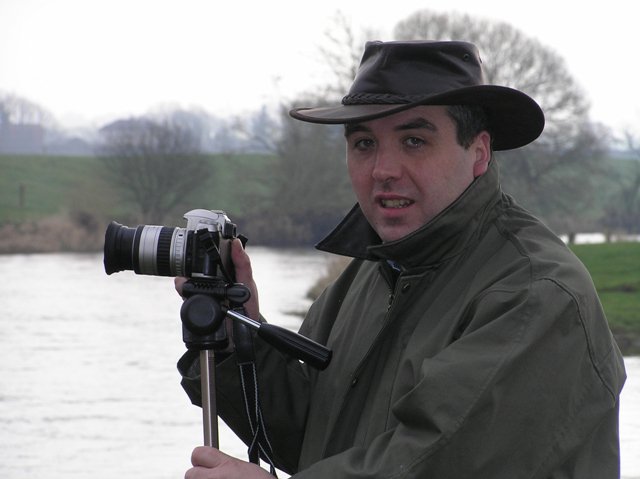 John Cash is a photographer, historian and tour guide who specializes in County Tipperary. You can visit his Luv Tipperary Facebook page for more great content like this post.
John Cash is a photographer, historian and tour guide who specializes in County Tipperary. You can visit his Luv Tipperary Facebook page for more great content like this post.
7 Sites in Northern Ireland that Feed the Soul
I remember visiting Northern Ireland in the days when the military occupied the border equipped with machine guns and combat gear. I loved the north just as much then as I do now that the army, barbed wire and weapons are gone and a quiet peace has settled over the land. It’s a rugged, raw and ancient landscape that isn’t changed by external forces. Battles come and battle go, but the land and its sacred places remain unmoved and unchanged.
The North is my favorite region probably because the bones of the old landscape still peek through the sod without having to fight massive motorways and residential developments for attention. The ancients knew the energy was powerful here, and they marked many of their sacred places. While some markings have fallen away, the energy still lives. It continues to nourish the human spirit today just as it has for thousands of years.
Sadly, most tourists in the north pass by these special places not realizing that just off the road they’re driving on are stopping places where the traveler can walk in two worlds at once. Here are seven of my favorites in the North. You can’t approach this thin places and not be moved.
BEAGHMORE STONE CIRCLES – Co. Tyrone
I’m an earth energy novice. Like most common people, I can tell when a place has a sacred feel, but I can’t feel the energy move through the stones and emanate from earth the way some of my friends can. But Beaghmore radiates energy that even I can feel. It’s palpable.
Beaghmore is a series of seven stone circles set in a clearing at the edge of the Sperrin Mountains in County Tyrone. Six of of the circles are paired and one stands alone. The circles date back to 2000 BC. Artifacts excavated from the site suggest ritual activity 1000 years before that.
Two interesting things about Beaghmore – The circle that stands alone has 800 jagged stones set in the center (known as Dragon’s Teeth) and one circle has a portal to the Otherworld. In the center of the circle with the portal is a recent burn mark in the center of scorched grass and earth. It is currently being used as a ritual site.
Read more about the mystical nature of Beaghmore on Maura Brooks’ blog.
THE GIANT’S RING – Belfast
Belfast gets a ton of visitors. But how many know that just outside the city is henge monument that predates the pyramids of Egypt? A henge monument is a circular enclosure with a ditch carved out inside the ring. A henge fort is the same circular enclosure on the ditch is on the outside making it easier to defend the fort.
The Giant’s ring is a henge monument with the ring and ditch easily identified. The earth ring is about 600 feet in diameter and in the center is a slight hill crowned by a five large stones that support a large capstone. It’s believed that these stones on the hill are what remains of a neolithic passage tomb. The area is now preserved and used as a park. The visitor can do a ritual walk around the ring and then examine the stones in the center. There is actually a 3 mile defined walk of the ring and surrounds that includes a bridge that dates back to the Stone Age and a historic woodland.
There is a lovely energy here.
NAVAN FORT – Co. Armagh
I knew about Navan Fort being the legendary stronghold for the Knights of the Red Branch and the place where the goddess Macha died giving birth to her twins. Also known as “Eamhain Mhacha” or the “twins of Macha,” Navan Fort was associated with pagan ritual for years.
But what I didn’t know was that the famous mound (130 feet in diameter and about 20 feet high) had a fire ritual history. About 94 BC a wood temple supported by large oak pillars was built where the mound is and burned on the site in ritual fashion. The ruins of the temple were covered up with stone and earth creating the mound we see today. Excavation showed that soil used in the covering of the temple came from other places – some quite distant. Today people return to soak in the energy of the mound which apparently is still quite active. There is also a tradition of rolling down the mound to in order to soak in the energy of the mound whilst giving one’s own energy back to the mound.
At the base of the mound is a fairy tree, an old oak that looks much like a dragon rearing up against an enemy.
The story of Navan Fort is well told during the guided tour. For the full experience, pay the money at the Visitor’s Center and take the tour. The guides are fabulous and there is much to learn from them.
WHITEPARK BAY – Co. Antrim
Everyone knows about the great tourist sites on the Antrim Coast – the Giant’s Causeway, Dunluce Castle, Carrick-a-Rede Rope Bridge and the Bushmills Distillery. Travelers visiting these places pass right by Whitepark Bay not realizing what a mystical site they’re overlooking.
Right between the Causeway and Rope Bridge, just off the A2 is Whitepark Bay. It has a car park and solid stairway that descends to the magical beach where the sand sings.
True.
The sand on the beach is mixed with chalk from the cliff face which gives it such a fine consistency that when the wind blows a certain way (which it inevitably will) one can hear the sand “hum” with vibration. The cliffs are gorgeous and tucked into their vegetation overgrowth are the remains of passage tombs. This space in the landscape was considered sacred to the ancients. This beach is a thin place. It’s a portal, a threshold to the Otherworld. A place for thinking, for connection with your higher self. One only has to walk it to know this truth.
I collect heart shaped rocks when I travel as souvenirs from my twin granddaughters. This usually takes an hour or more to find the perfect rock shaped like a heart. At Whitepark I set out looking for two heart shaped rocks and asked my friend Maura to help thinking we could save time. Suddenly they were everywhere. Within 10 minutes we found 8.
8 … a mystical number for sure. The number that symbolizes infinity, connection to the Creator, the Cosmic Christ, the totality of the Universe. Maura kept one for herself. I brought 7 home. On sits on my desk. A daily reminder of Whitepark Bay.
GRIANÁN of AILEACH and the INISHOWEN PENINSULA – Co. Donegal
Driving the circle around the Inishowen Peninsula is at least a half-day, if not whole day commitment. But why not commit? It is some of the most spectacular driving in all of Ireland. And unlike many of the other spectacular drives (Ring of Kerry, Sally Gap, Connemara Hills, Molls Gap) it isn’t so crowded with visitors and coaches. Even in the cold and the pouring rain, the Inishowen is gorgeous. At its base on the south eastern side is Grianán of Aileach, also known as the Sun Palace.
Grianán of Aileach was the ancient royal site for northern Ui Néil from the 5th to the 12th century. The now restored cashel dates to the 3rd century and caps three concentric earth rings. The panoramic views from the cashel of the peninsula, Loughs Foil and Swilly and the city of Derry are dizzying – especially if you’re balancing yourself on the top ridge of the cashel.
There is also a tradition that the temple was built by Daghdha, the good god or god of the earth. He was known as the King of the Tuatha dé Danann, a race of supernatural beings descended from the Goddess Danu. They inhabited Ireland before the Celts. This tradition has Daghda building the fort to protect the grave of his son. A variation tells of giants building the hill and the Grianán on top a residence for the shining ones who gave birth to the children of the sídhe. All of these traditions link the hill and the fort on top with supernatural beings, to unseen energy and power and a link to the Otherworld.
BOA ISLAND & CALDRAGH CEMETERY – Co. Fermanagh
This is place every mystic should visit before he or she dies. Walking into Caldragh is like passing into another world. It’s an ancient cemetery on Boa Island set on the north shore of Lough Erne. It is surrounded by hazel woods with a fairy tree at the entrance. The ground is lumpy due to all the old graves, marked with jagged stones now covered by grass. There are also new graves but no church indicating this particular spot is still a place of sacred reverence for the local community.
Caldragh Cemetery is most famous for its Janus figure, a stone figure likely dating to the 4th or 5th century that has a face carved on both sides (thus the name Janus who was the Roman god of two faces). The Janus stands about 4 feet high and many archaeologists and mystics have guessed at what the two-faced figure represents, but it’s all speculation. There is a great energy in the stone. A dangling a pendulum above this stone spins quickly, even for the beginner. And the quiet soul will find a peaceful rest and easy connection to the Otherworld here.
Poet and Northern Ireland native, Seamus Heaney memorialized the Janus figure in a poem.
JANUARY GOD
Then I found a two faced stone
On burial ground,
God-eyed, sex-mouthed, it’s brain
A watery wound.
In the wet gap of the year,
Daubed with fresh lake mud,
I faltered near his power —-
January God.
Who broke the water, the hymen
With his great antlers —-
There reigned upon each ghost tine
His familiars,
The mothering earth, the stones
Taken by each wave,
The fleshy aftergrass, the bones
Subsoil in each grave.
For me Caldragh is much like the Rock of Cashel. No matter how many times I visit, I always want to return.
ALTADAVEN WOOD & ST. PATRICK’S CHAIR – Co. Tyrone
Altadaven Wood or Favour Royal Forest is an old wooded area bisected by an ancient road known as the Sliabh Beagh Way which snaked through Counties Tyrone, Fermanagh and Monaghan. On that road is the Demon Cliff where there is a large stone throne-like chair straddling a narrow space on the road. The chair, and the well below it are now known as St. Patrick’s Chair. Legends tell of this being an ancient druidic site that St. Patrick came upon while walking the Sliabh Beagh Way. When he saw the pagan ritual being performed he raised his crozier and cast the demons (druids) off the cliff and claimed the sacred site for Christ.
The forest is one of those great “edges” in the world where one crosses over into something upon entry. It’s thick and the mystical walk to the chair is deeply shaded by fir trees and lined with ivy, holly and fern. And suddenly you’re at the chair. Tokens left behind are reminders of other pilgrims who walk to the chair with intentions in their hearts. Some say that if you sit in the chair and make a wish, your wish will come true within one year unless you tell someone. It’s worth the walk.
All of the sites mentioned above are featured on our DISCOVER THE NORTH mystical tour of Ireland’s thin places.
An Ephipany in Ireland – Why do I Keep Going Back?
Every year we travel to Ireland with a few guests and we share with them some of our favorite thin places, mystical places where the veil between the two worlds is thin. I’ve been traveling to Ireland for the last 20 years and when I add up the expense of this travel it would have paid for a trip around the world … but I keep going back to the same country. Why?
One of our guests on the 2013 Discover the North tour was a personal friend. He asked me if I was going to do tours to other thin places – Scotland maybe …. perhaps Wales or France or Russia. Certainly these countries had thin places.
I didn’t have an answer. I wondered for months about what he said. Maybe Ireland was just too easy. Maybe I was too comfortable with the familiar.
My husband agreed. He was open to expanding the thin places field of travel. With these thoughts in mind I traveled to the North last September secretly expected it would be my last trip to Ireland for awhile. It was time to move on to other thin places.
GLENCOLMCILLE
Our Discover the North group’s first two days were exciting and a little stressful with getting everyone settled in. By the third day we all knew each other and the schedule was a bit more relaxed. On day 3 half our group went fishing while the other half took a leisurely drive through Glencolmcille, a gorgeous, rural village in hills of County Donegal where St. Columba founded a monastery and pilgrims have been coming for years.
There’s a church in the valley – right in the middle of the glen. St. Columba’s Church. And just outside the church yard is a standing stone, a way marker that serves as one of the turas on the Glencolmcille pilgrimage. The group got off the bus at this church and scattered across the church yard and neighboring fields.
I took a moment to walk behind the church and take in the landscape. In one single moment a feeling I can’t describe swept over me. I knew why I kept coming to Ireland. There’s a connection to the land for me. Though I’m not native to Ireland and I’ll never leave my home in Maryland permanently, there’s something about Ireland – especially in the North – that connects. It means something.
I grow and change with every visit. I learn something new. I see something new. I discover some new truth with every visit.
So we’ll be returning to the North the year in May with another group. I got so enthusiastic after last years tour that I scheduled two tours to Ireland this year.
France, Scotland, Wales and Russia will have to wait.
St. Columba and Glencolumbkille
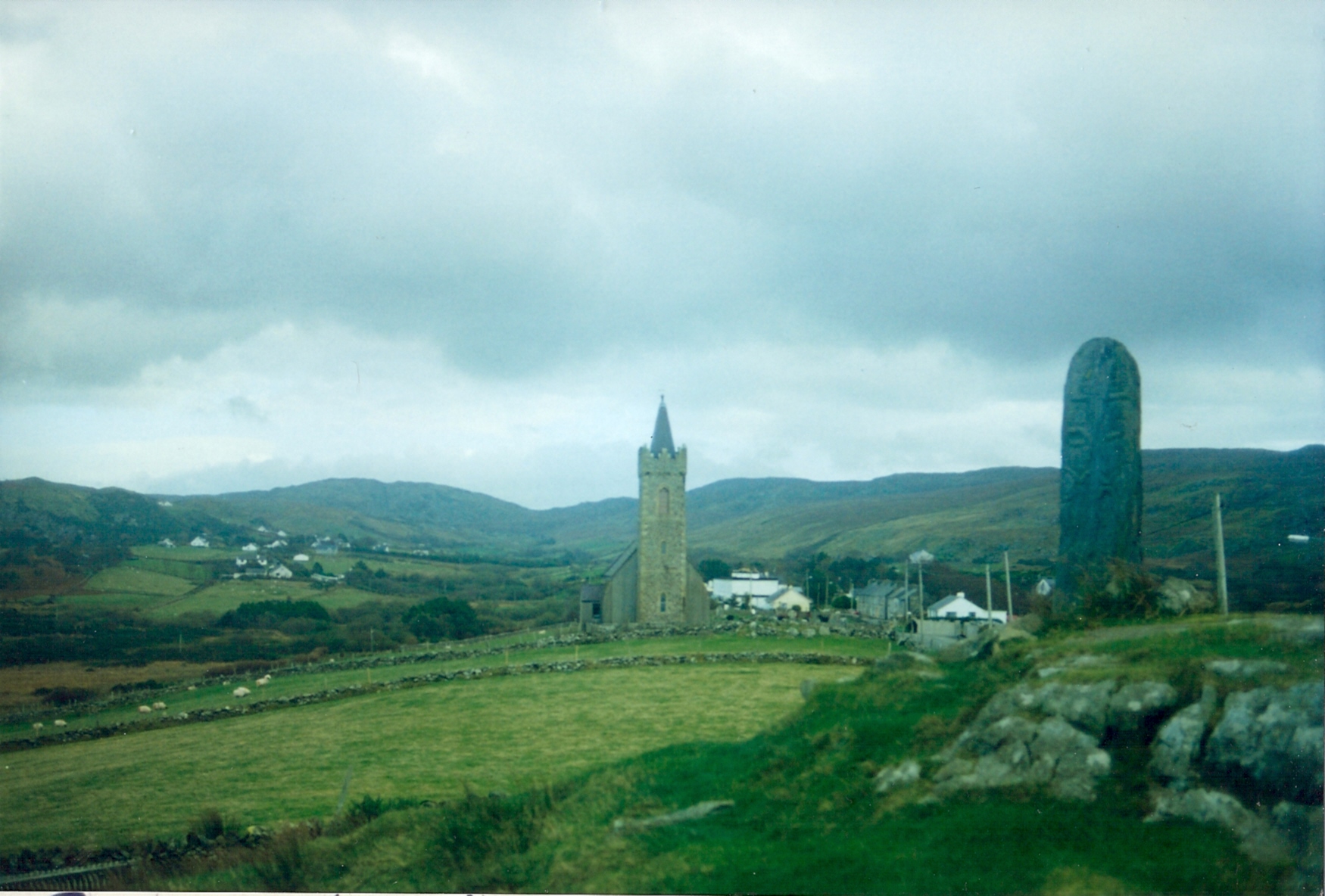 Glencolumkille is a rural parish in southwest County Donegal. It is most known for its pilgrimage that honors the patron saint and protector of Donegal, St. Columba. There are many variations of his name (Columbkille, Colmcille). The Pilgrimage of St. Colmcille, also known as the Turas Cholmcille honor the saint while personally drawing his blessing and strength by walking in his footsteps across a land that was once his home. There are 15 stations scattered throughout an enchanted glen – each marked by a pillar stone or cairn or some type of stone marking.
Glencolumkille is a rural parish in southwest County Donegal. It is most known for its pilgrimage that honors the patron saint and protector of Donegal, St. Columba. There are many variations of his name (Columbkille, Colmcille). The Pilgrimage of St. Colmcille, also known as the Turas Cholmcille honor the saint while personally drawing his blessing and strength by walking in his footsteps across a land that was once his home. There are 15 stations scattered throughout an enchanted glen – each marked by a pillar stone or cairn or some type of stone marking.
My favorite definition for “pilgrim” was written by Paul Elie, found in his book The Life You Save May Be Your Own, a book about great writers and the power they have over us. Paul says, “A pilgrim travels within the context of a story, in order to be changed by the story.” The definition certainly fits the pilgrims who do the Turas in Glencolumkille.
To remember the story of St. Columbkille is to remember a man who was a descendent of the ruling tribe – royalty in his day. A man who was educated and tutored by the best scholars. Columbkille was a leader who could shape meaning from circumstances. He founded more monasteries and monastic communities than any other single Irish saint. But pride got the best of him when he was at his most powerful, and he picked an fight with another saint – St. Finian who had an illustrated psalter. St. Columbkille secretly copied St. Finian’s book so that he would have a copy for himself.
St. Finian was offended and demanded Columbkille’s copy. Columbkille refused saying knowledge gained from books should be shared not coveted, especially when pertaining to God. Finian took the matter to the High King for arbitration and the High King ruled in favor of St. Finian with a famous statement – “To every cow its calf and to every book it’s copy” meaning every calf belongs to its mother and every copy of a book belongs to the original book’s owner. Columbkille was outraged in losing the battle and this disagreement eventually led to Columbkille’s tribe attacking a tribe to the south which led to the slaughter of over 3000 people.
Columbkille was so ashamed to have been the root of so much death and destruction in his native land, that he sent himself into voluntary exile. He sailed from his beloved Derry to Scotland landing with a few followers on the island of Iona where he established a community which flourished into a great seat of learning and spiritual growth. Iona still has a community there and it continues today to draw pilgrims.
So as the pilgrims travel through the station in Glencolumbkille, they reflect on the saint’s life, his strength, his weaknesses and his devotion, and they ask his blessing for own lives. Every station has a ritual, a prayer to be said, a devotion to be made. So that when the turas are all done, the pilgrim has drawn strength from both the story and energy of the land.
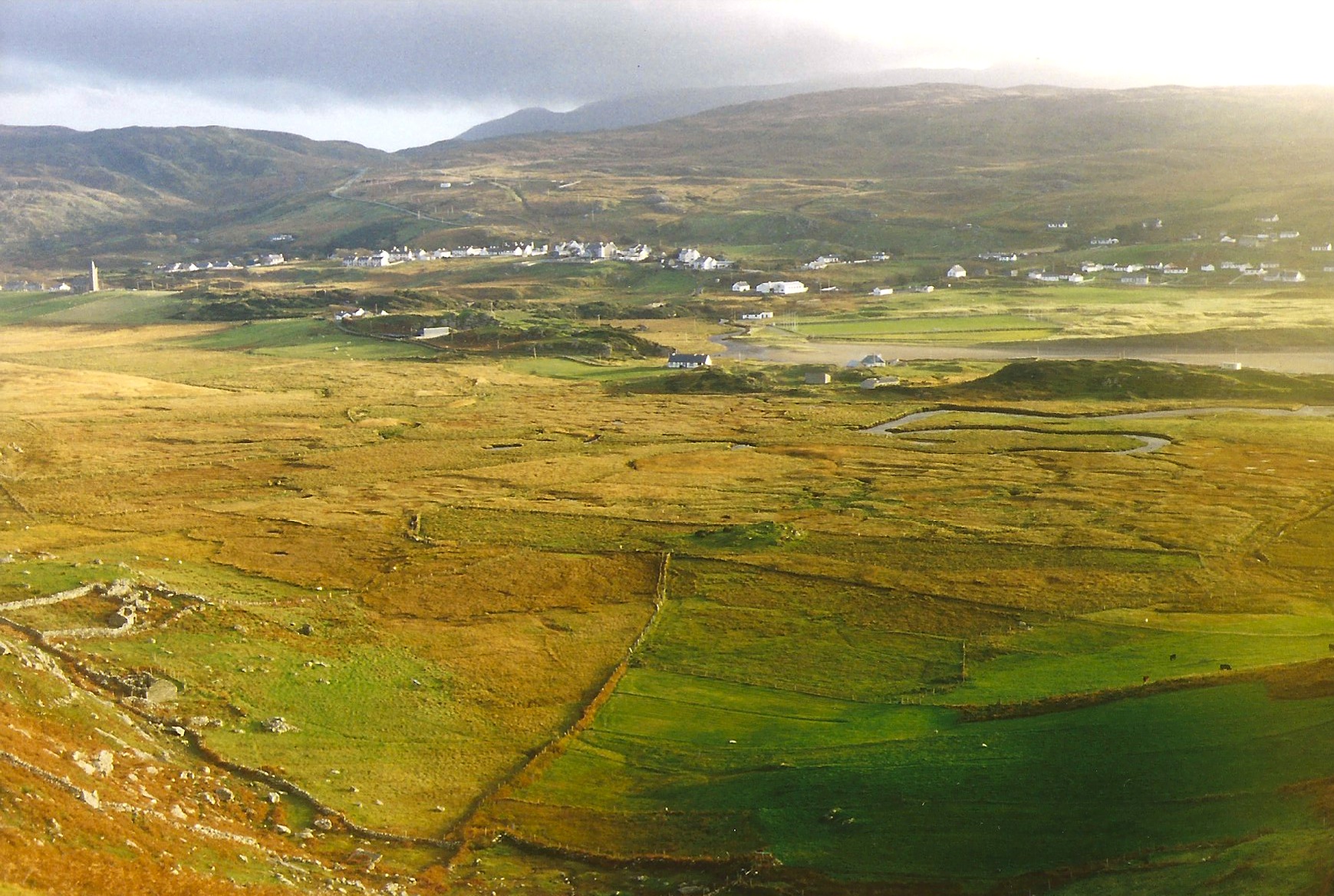 The land has been considered sacred for thousands of years. Devotion and ritual in the glen dates back thousands of years. Portal tombs dating from 2000 BC can be found in the glen as well as court tombs the date to 4000 BC. The land in Glencolumbkille has an energy that early civilizations felt … that has lasted until the present day.
The land has been considered sacred for thousands of years. Devotion and ritual in the glen dates back thousands of years. Portal tombs dating from 2000 BC can be found in the glen as well as court tombs the date to 4000 BC. The land in Glencolumbkille has an energy that early civilizations felt … that has lasted until the present day.
Though Ireland has suffered in recent years with abuses committed by Catholic clergy which has rocked the faith of many, there are still hundreds that come to the glen each year to do the rounds. This kind of joining of devotion, spirit, land and healing never betrays trust.
I visited Glencolumbkille shortly after I married my husband. Our favorite spot was the Stone of Gathering (Turas 9). This tall carved pillar has a hole in the top. The stone was tied to a tradition where engaged couples would intertwine their fingers in the hole while professing their love and commitment to each other before a gathering of community members. There is also a tradition that if you peer through the hole (as Dan is doing in the image above) you will get a glimpse of heaven. The view from where Dan is standing is breathtaking. There is a special energy around this pillar… a kind of loving, warm, peaceful energy.
At the southwestern tip of Glencolumbkille is Slieve League (Sliabh Liag) which is the highest cliff face in Western Europe. The monastic serenity that blankets the entire glen and its scenic surroundings moves from peaceful to powerful – back and forth – and the prayers of the pilgrim mirror that energy.
“…echoes of the centuries’ feet
That moved along the penitential stones
In all thy winds are sweet.
Here came my fathers in their life’s high day
In barefoot sorrow, but God knows the whole:
Not for themselves they fasted, but to lay
Up riches for my soul.”
Glencolumkille and Slieve League are stops on the 2013 Thin Places Mystical Tour of Ireland. Check out the itinerary.
Other Good Webpages on Glencolumbkille and the Turas
Voices from the Dawn – Glencolumbkille Turas
Megalithic Ireland – Glencolumbkille Turas

